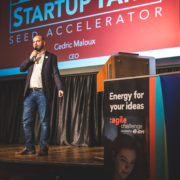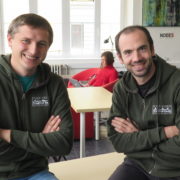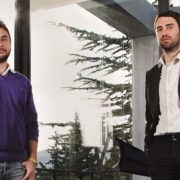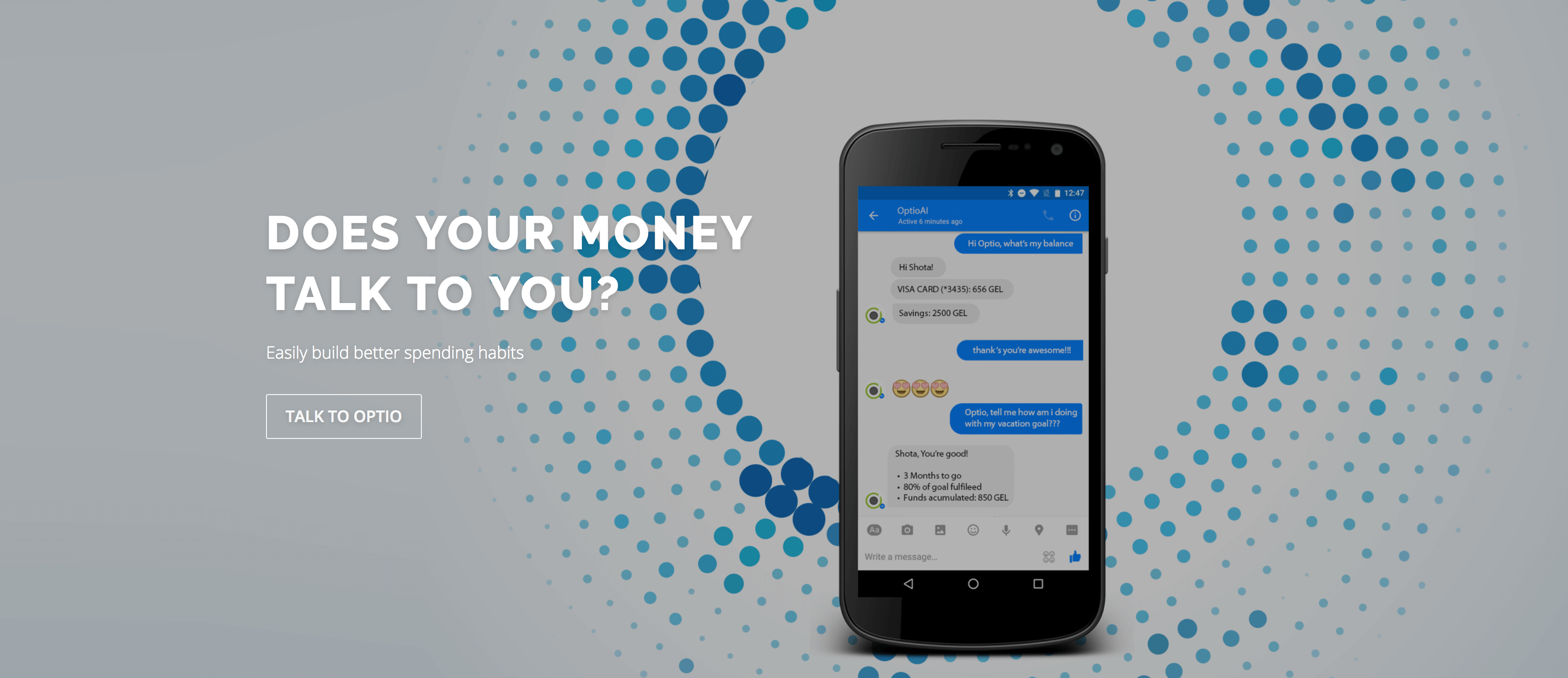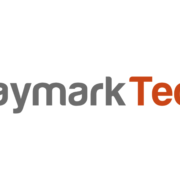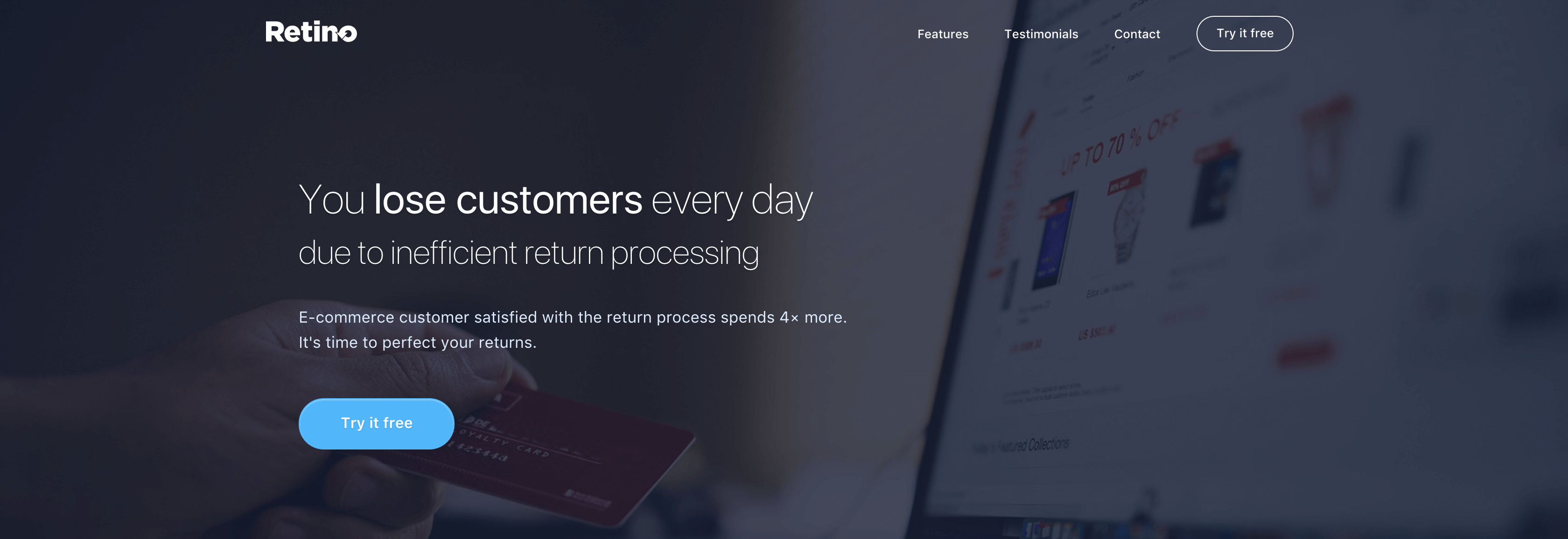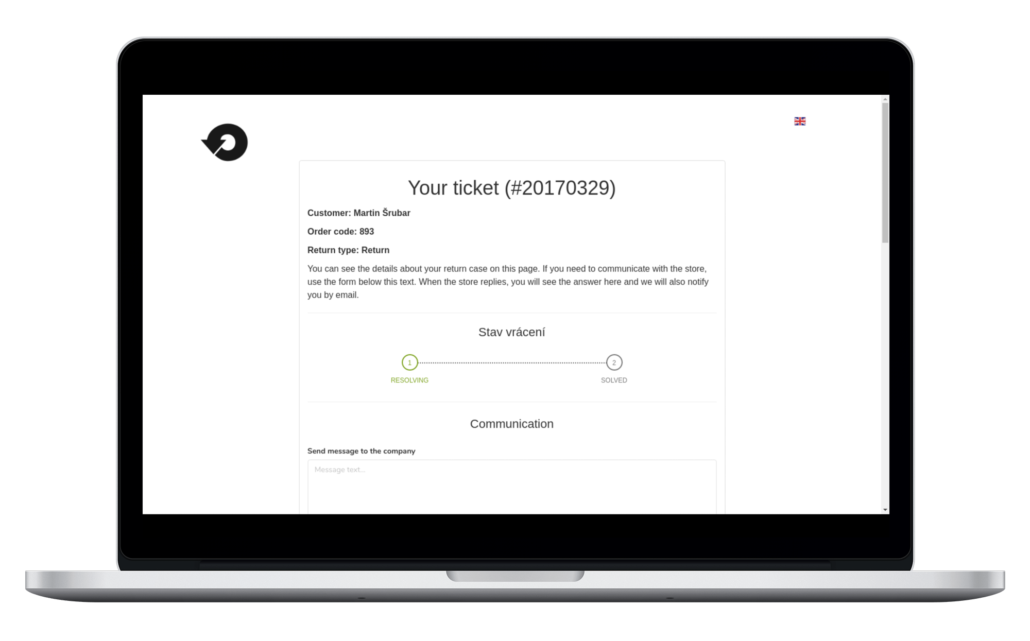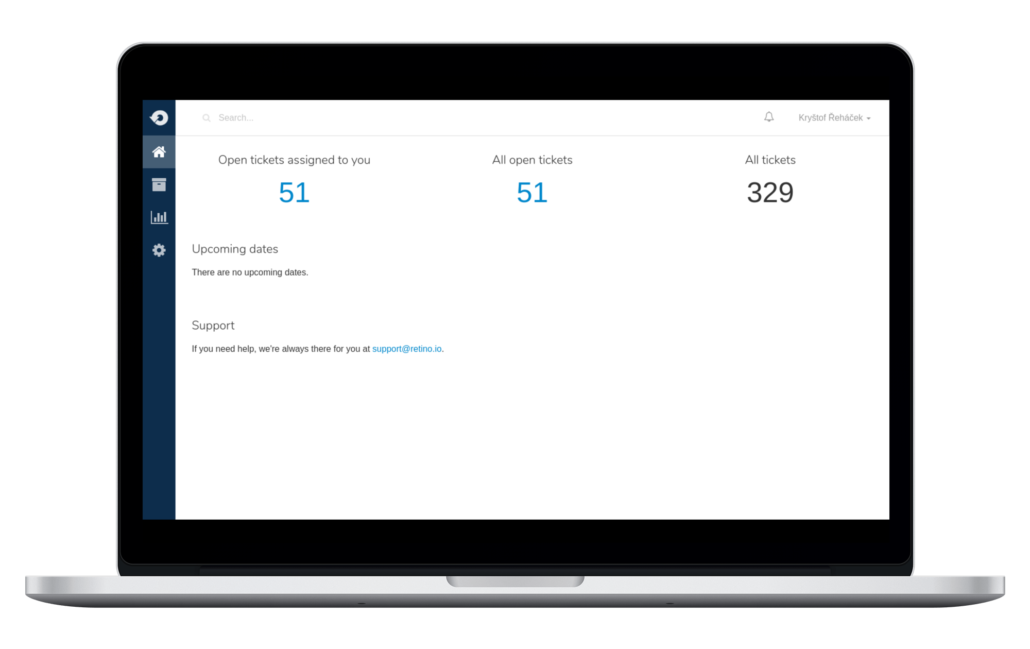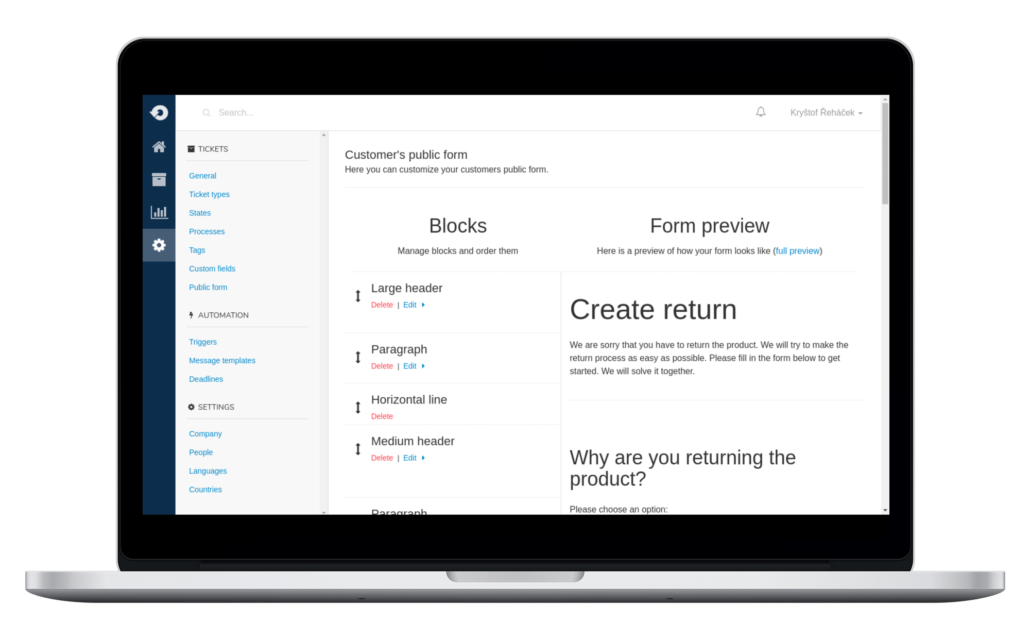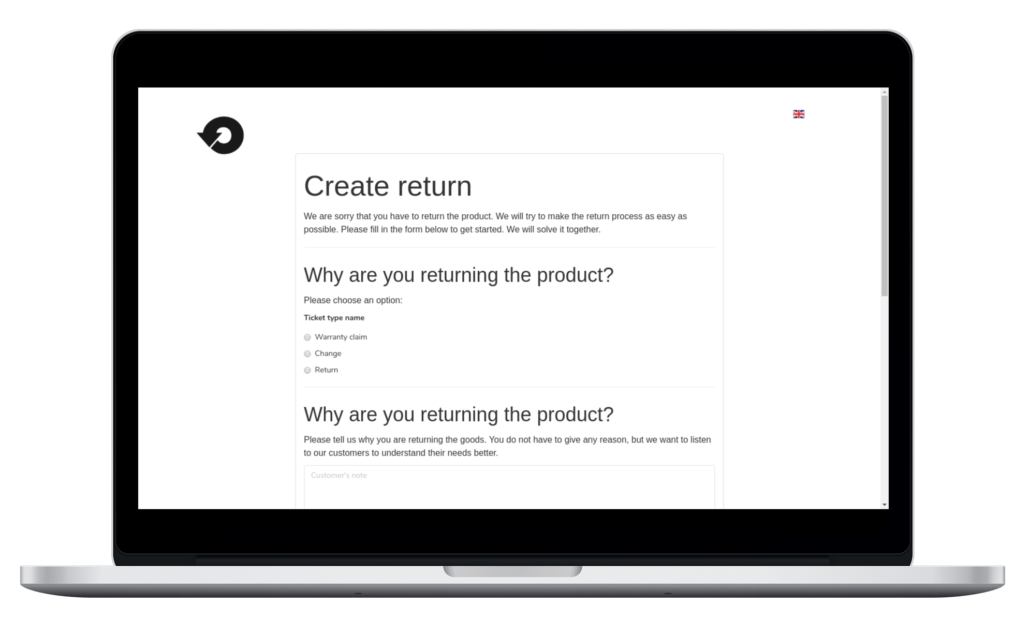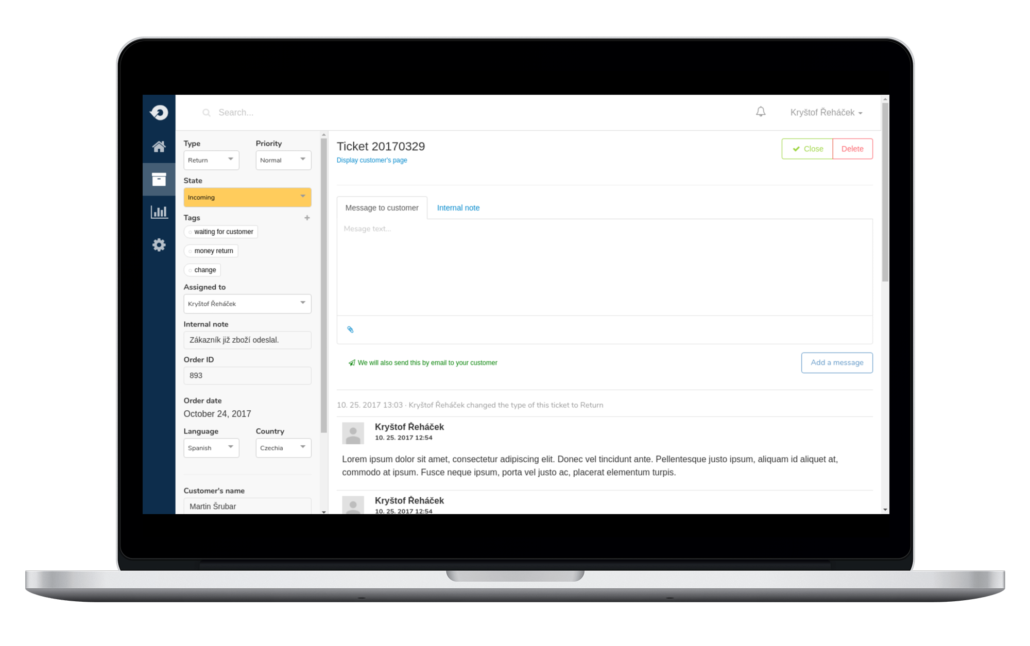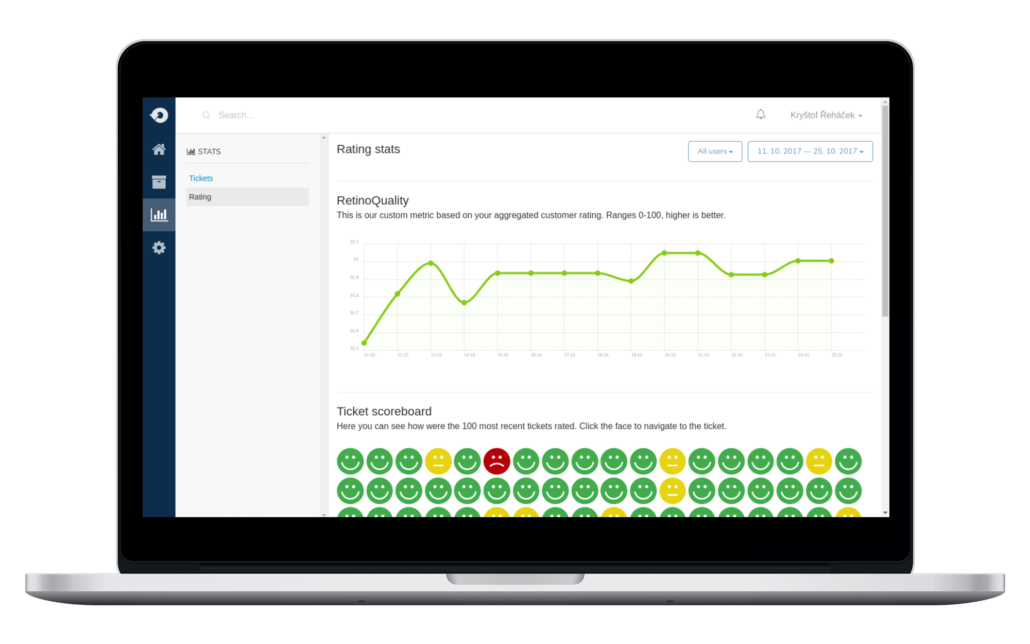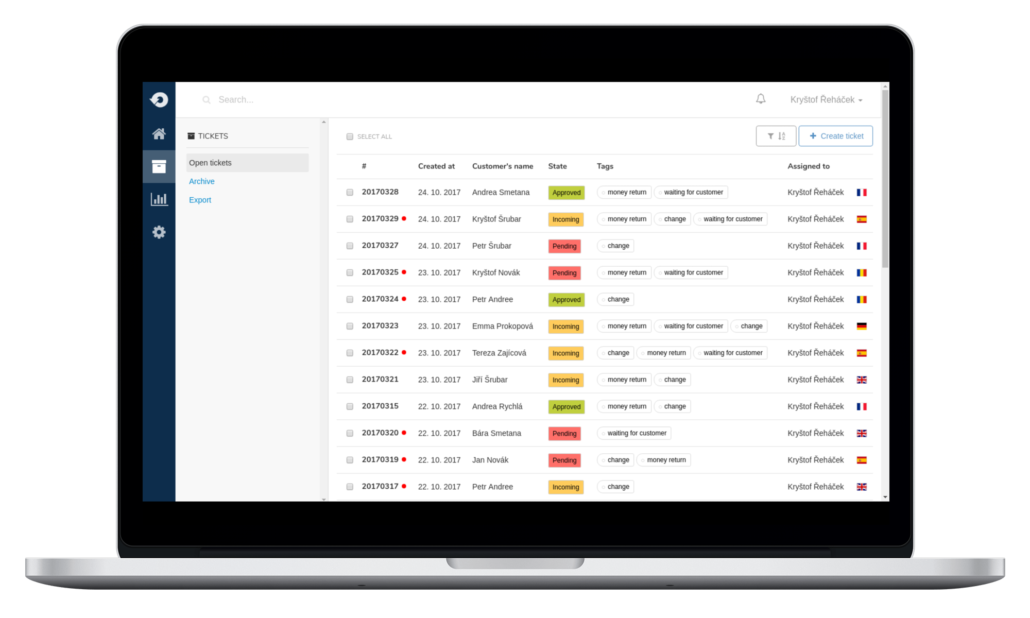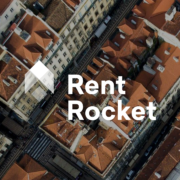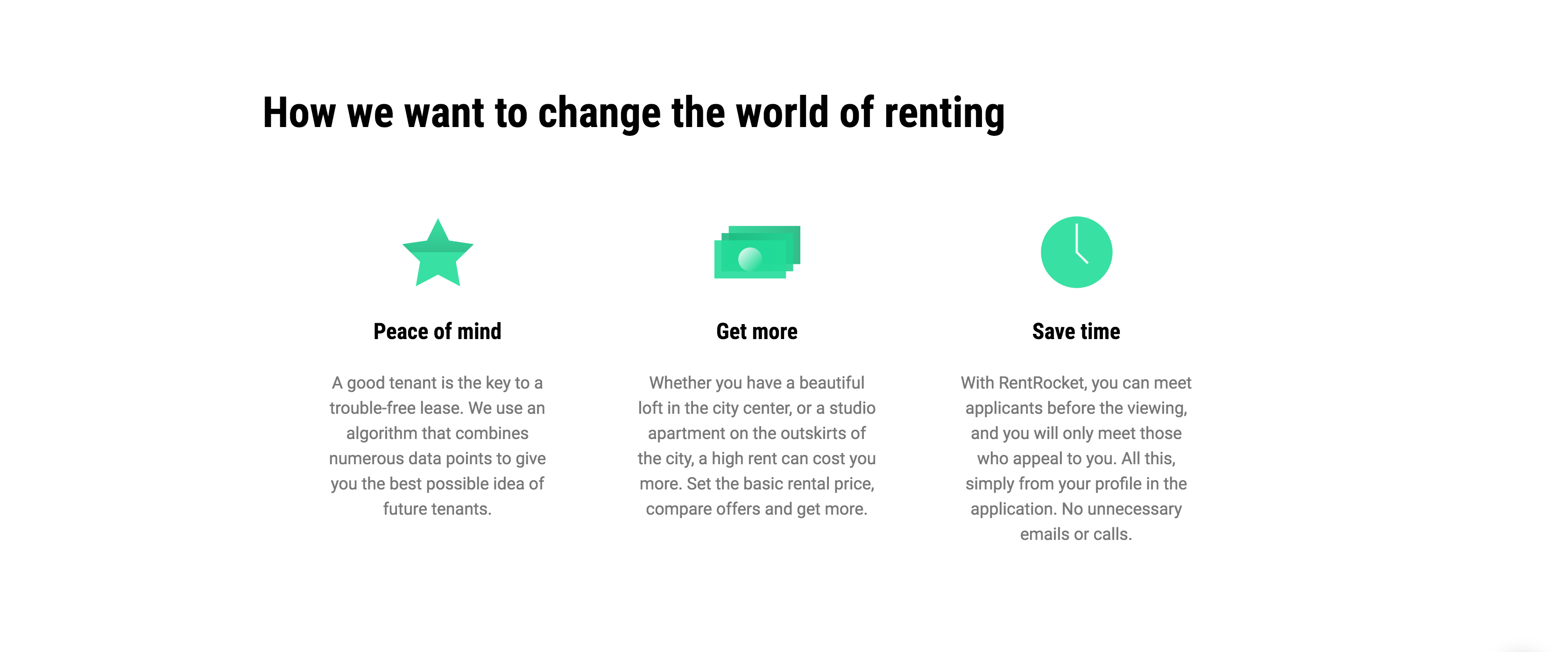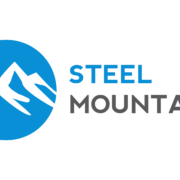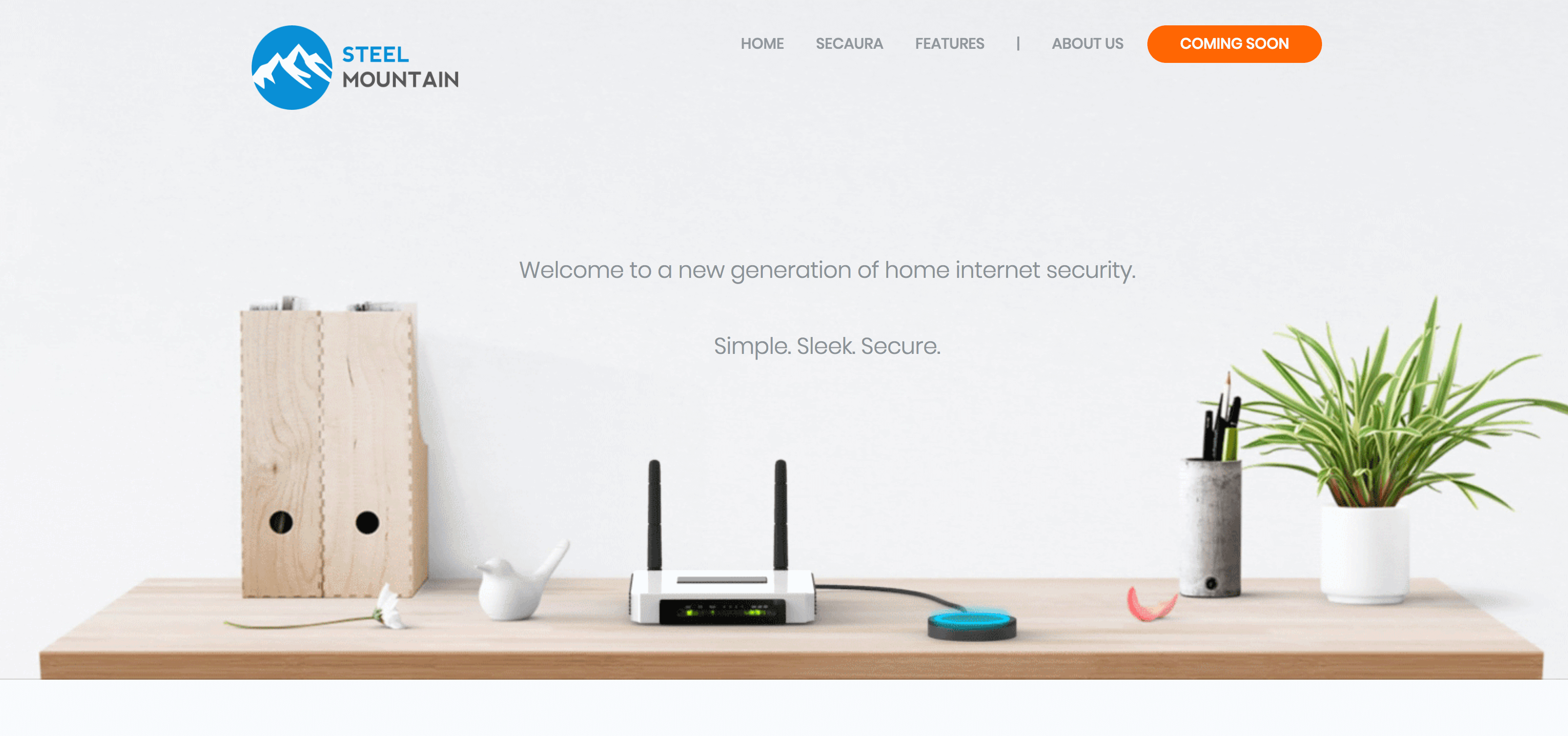Meet Mixed Reality Cloud: Augmenting Our Reality
/in Interviews, Life at an Accelerator, Startups, StartupYard News/by StartupYardIt has been a year of firsts for StartupYard. In Batch 8, we’ve invested in our first vr company, our first Regtech company, our first Proptech company, and finally, our first Augmented Reality (AR), or “Mixed Reality” company as well.
Mixed Reality Cloud, headed by Adam Roszyk, is working on their first augmented reality product: Cloud Stories. It’s a “Photoshop for AR,” allowing creatives in advertising and digital agencies to create AR experiences for brands with no coding, and no need for a specialized IT development team. Roszyk’s mission, as a long time AR geek and a serial entrepreneur from Poland, is to push AR out of the realm of geeky ideas, and into the mainstream, by helping brands to create compelling content and experiences that blend with our reality.

The future of advertising (and content), is AR. Where will your customers be in 5 years? I talked with Adam about the project this week:
Hi Adam, first of all, I think we all need a little education on the difference between Augmented Reality (AR), and Virtual Reality (VR). What is the difference, and what does Mixed Reality Cloud do?
Hi Lloyd, first of all if our readers haven’t yet tried Virtual Reality – they’re missing something important. Both VR and AR are new types of human-computer interaction. They will replace keyboards and screens in the coming years.
For me, the difference between VR and AR is similar to how a PC is different from your smartphone – VR is like a PC, or game console – it cuts you off from the real world to take you to the center of a story, game or movie. It requires full dedication.
AR is lighter, but even more powerful – it’s gonna replace your smartphone. It allows a computer to overlay objects and information onto the real world, in a way that feels natural.
This “overlay” of information will be similar to what a smartphone gives you now, but will exist in forms more connected with real objects. It will allow computers to give us much more timely and useful data, based on what we see, not what we type and tap. It’s everything a smartphone can do, but without having to look at a hunk of metal and glass all the time.

Adam Rosyzch, Founder and CEO at Mixed Reality Cloud
If you think about it, we have been familiar with the AR concept for many years as a society, via Sci-Fi films like The Terminator, or Iron Man. AR is great for film because it eliminates the very non-human, nonorganic idea of staring at a screen all the time to get data and use a computer. It has been used to show audiences how a computer thinks and decides things.
Very soon, we will start seeing how average people will enrich their environments using AR.
That’s what we are working to do. Mixed Reality Cloud is like Photoshop for Augmented Reality. It’s a set of tools to build AR applications. We do that by creating a virtual space in which a designer can create and test ideas, and then deploy them to the real world in AR experiences.
AR experiences are amazing for mixing ideas with the real world around us. How does a new car look in your driveway? How does a lamp look in your living room? How cool would it be to have your favorite Pixar characters walking around your house?
We don’t currently have software specially made to design and build things in Augmented Reality, and make those experiences accessible for ordinary people.
There are great 3d engines, that try to support AR as well, but at their core they will stay 3d engines forever. We’re AR at heart, and we’re focused only on tools which are necessary to bring AR to everyday life.
What’s your background in technology, and how did you come to found your own company?
I was studying CS at University of Adam Mickiewicz in Poland, where I started my first company, FunBrush. It was an IoT connected toothbrush to make brushing teeth more fun for children. It allowed kids to watch a screen and play a game while brushing their teeth, and parents and kids loved it. I raised funding at a $1mln valuation for this company, and led it from idea, to first clients, but we failed with scaling up the project.
I think the idea was a bit ahead of its time. The technology wasn’t common enough yet to make it easy to adopt. But that’s life.
After that, in 2015 I moved to San Francisco to work at VicariousVR – where for the first time in my life I tried VR myself.
Is the Hype over AR/VR overblown right now, or is something bigger happening?
VR has been overhyped many times in the past. The promise of the tech has always been too big for what we could actually do.
Now the market is slowly realizing its true potential. Every month we see more and more examples of new industries adopting it as a tool; graphic designers, architects, data analytics, or even armies.
VR still has many problems – it’s tethered to expensive pcs, you need tracking devices, there’s no keyboard in VR, etc. However – it’s like the first Mac computers: first we see entertainment and business use cases, then devices get cheaper, operating systems get smarter, and most important there are tools, which can be used only in VR. Businesses begin to see an advantage over those who are not using it yet. Then we’re gonna see way more broad adoption.
AR on the other hand seems to be underhyped, really but isn’t. We still don’t realize how much it’s gonna change our everyday life.

The 2017 film Ghost in the Shell demonstrated the potential uses of Mixed Reality
We’re in the Node5 – everyone is sitting in front of their desk typing on a keyboard and staring at a tiny monitor in front of them. Let me just remind you of something: that is not some law of ergonomics, and it is not the way people worked even 50 years ago. It won’t be the way we are working 50 years from now either.
Having lived with AR for years, this arrangement already seems old-fashioned to me.
AR will allow people to work wherever they want, without any other physical devices. You know – computers let people get rid of calendars, rollodexes, calculators etc. Eventually they allowed us to move our work from the desk to the cafe, and have everything with us.
And now AR will help us get rid of the desks and computers completely. You just won’t need them, any more than you need a physical rolodex.
Mixed Reality Cloud is focusing first on advertising agencies. Why are these a natural early adopter for the technology, and what problem do you solve for them?
That’s right. Creative and digital departments in advertising agencies are our first customers.
It’s because those people are the ones who already recognize the potential of AR, and they already gets requests from their clients about creating AR experiences. Ikea just released an AR app for phones, where you can see how a sofa will look in your living room before buying it. That’s just the obvious stuff.
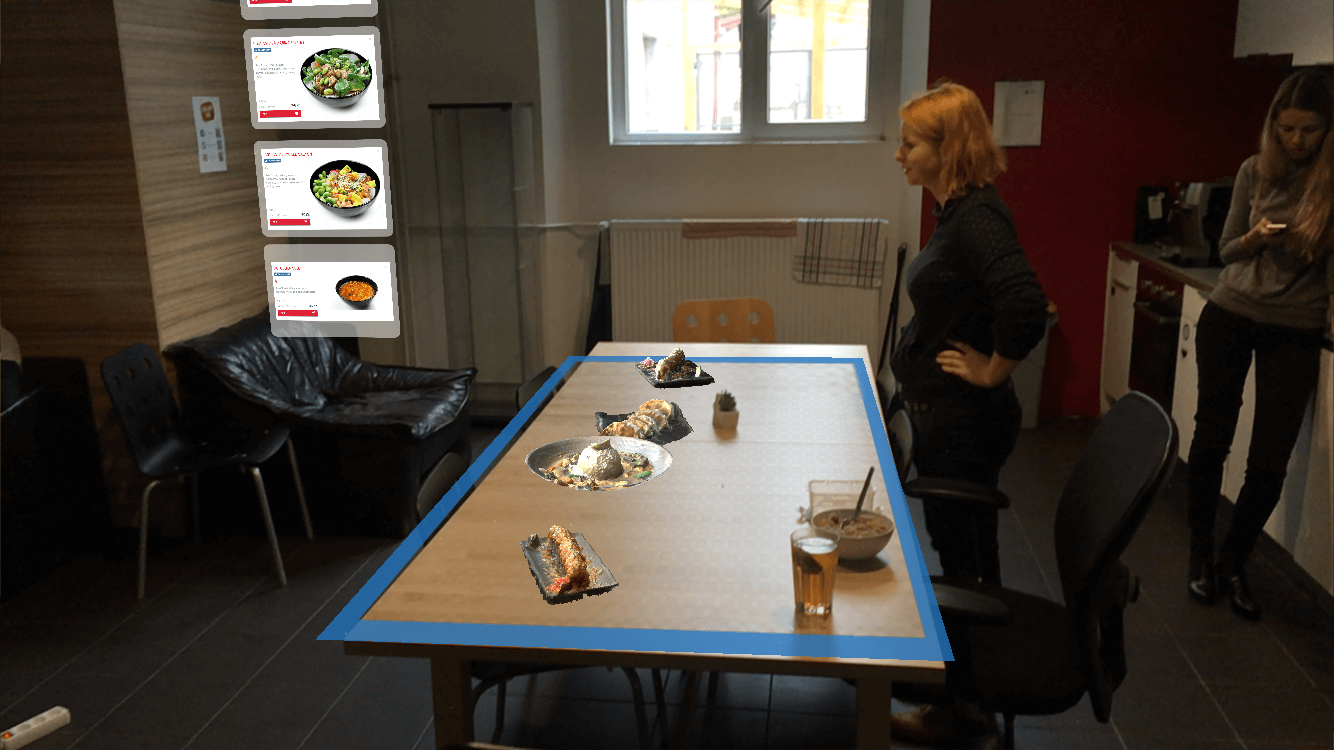
Using Mixed Reality Cloud to look at some food items that aren’t really there.
Every business can came up with a similar case of how AR can help them promote, sell, or educate their prospects. I think the first big innovations in this area will come from content, gaming, and advertising – that is the classic progression for a new medium.
But the problem is that marketing agencies don’t have the tools or the know-how required to offer AR to their clients. That’s why they’re using our first product – Cloud Stories – to fill the gap in their production toolchain, and have a tool – which allows them to deliver high quality AR content quickly.
You’ve been talking to a lot of potential customers in advertising and design. How do they see the future with AR advertising? What are some of the coolest ideas that might be mainstream soon?
Let’s dive 5 years into a future where you are using AR glasses everyday.
Anything is a control surface. Anything can be enriched with data, if you want it to be.
Just imagine how special your coffee mug is with those glasses: you can see how fresh it is, see how hot it is, or make sure you don’t accidentally start drinking from the wrong one.
Now your calendar, news feed, or maybe even your Slack channel are a gallery of holograms. These data take the shape you choose, and appear when and where you want them, making it easy to share them, experience them, and get the best use from them.
Or you can have a look at a bike you’ve been thinking about buying recently. And it’s beautiful – on roads of Toskania, late in the evening, displayed as a highly polished 3d animation right in front of you.
Everything will change with AR. With AR everything around you will have an internet connection– through you. Floors, doors, newspapers, credit cards – also everything will have it’s own interface, yes – every physical object you want- will have any additional layer of information you want it to have.
Putting control surfaces on objects will be as easy as grabbing a new app today. Probably easier. Buying products will be a smarter experience: you won’t waste as much, because you can see how a thing will really work, and if you really need it.
You’re buying a tent – isn’t it difficult to buy one online ? How do you know if that size is right ? With AR, you can set up a campsite in your garden and buy everything you need from AR. You can see and really think through your decisions, and make smarter ones.
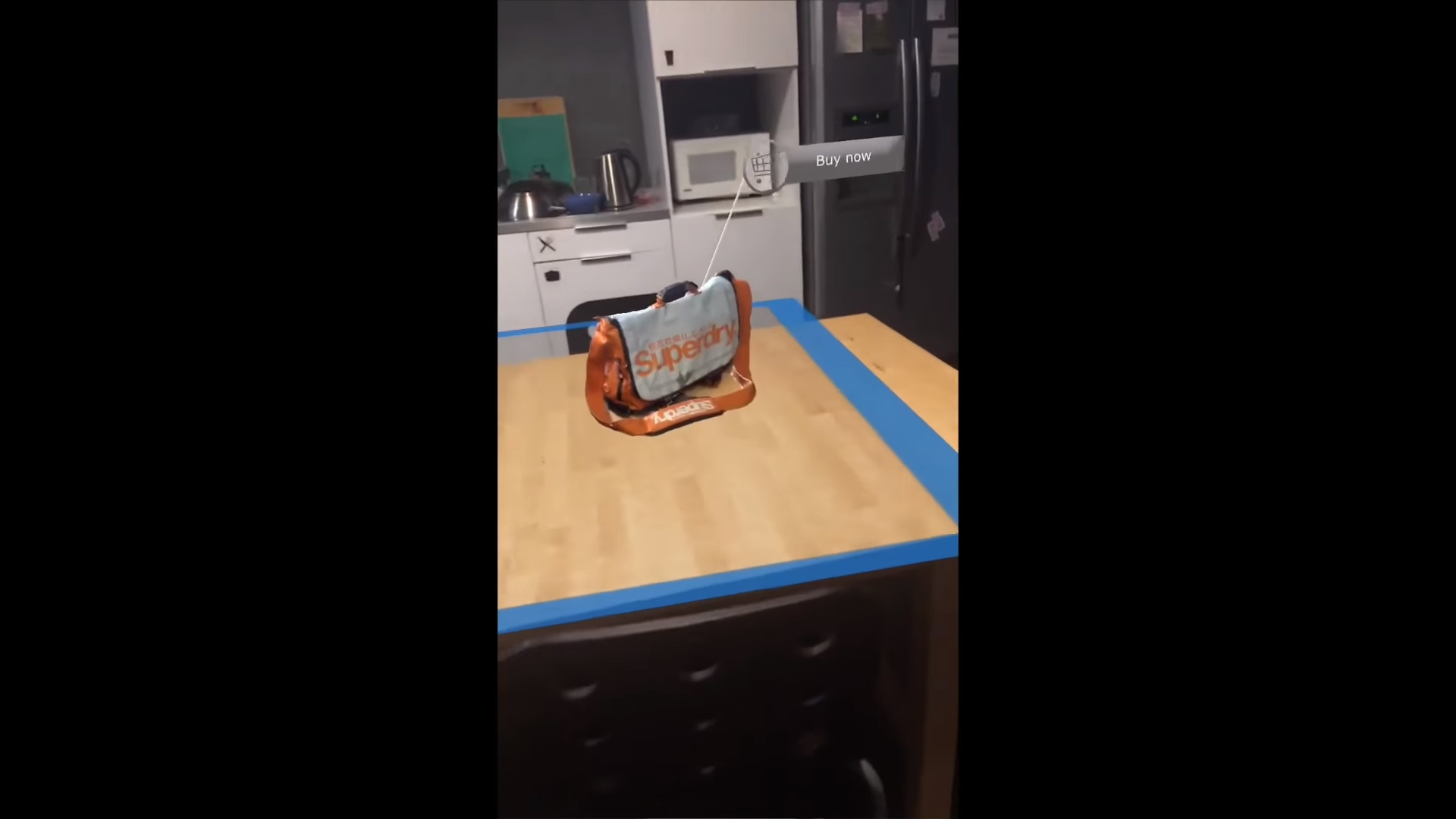
A bag presented in AR via Mixed Reality Cloud- it’s hard to tell it isn’t really there.
Imagine searching for a nice place for a date with your wife – wouldn’t it be cool to see 3d models of the places and dishes, instead of just flat 2d photos? That kind of thing can even be experienced on your existing smartphone – like a little window into the AR world.
AR will democratize 3d content – it’s a long process but we’re gonna get there. Now it’s time to build tools for capturing, creating, and editing this content.
Some people view this vision of the future as scary, or invasive. It’s a common idea in dystopian sci-fi, for example. Are these cultural critics wrong about the promise of AR?
Wrong is a strong word. I think in films and writing, you use these ideas to highlight the nature of people, and show how society can go wrong. So advertising and Augmented Reality are often mixed in sci-fi to exaggerate the problems of our current world onto a possible future.
You can learn from these visions, but remember that you have an effect on your own environment. People won’t accept things that they cannot accomodate in their lives, and many marketing strategies have failed because of that. In California, for example, they tried to play tv commercials at gas pumps and checkout lines in the grocery store. People hated it, and they went away. The truth is they didn’t make sense for the advertisers because of that.
We should look at marketing as more about trying to offer people things that are genuinely relevant for them, in the right time and place to help them make decisions. This idea of dystopian hyper-aggressive advertising is not nonsense, but it does ignore the point of branding, which is to be seen favorably.
Brands can use AR to do public art and competitions. They can do it to delight their customers, and there will be ways of shutting it all out, just like there are today. Still today, advertising is a “price” you pay to get something you want, it’s not a tax that everyone must pay no matter what.
Why should big brands embrace AR technology, instead of relying on existing channels and methods of delivery? What’s the unique benefit in AR?
You could ask me about the unique benefits of mobile advertising in 2009. There are many benefits in the technology, but what made brands embrace it was that the users spent their time on their mobile phones. It will be the same with AR: the brands will follow the users, and the most creative companies will be there first.
In the last 10 years, it became possible for a company to thrive on the power of one mobile app. And AR will be just like that.
On YouTube you had RedBull, or a million startups selling cool new gadgets that look amazing on video. On AR there will be a big opportunity for brands to shape their image for the new generation. The risk takers will be rewarded.
Teenagers are already native to these technologies. They just gets how it works immediately, like a natural progression from mobile phones. AR will become something as natural as the swipe, or pinch to zoom – it will go from something weird, to the being “the way computers work.”
Brands cannot afford to wait much longer.
What is the main technical challenge you’re facing with your technology right now, and how are you planning to solve it?
The key challenges are streaming 3d content to a range of devices like phones, and standardizing how we code 3d assets.
3d models are essential for Augmented Reality, but the problem is that they’re much heavier than 2d photos. To be smooth and natural, they need to work very reliably and fast.
That’s why we’re working on a streaming technology, which will let users downloads only parts of assets which are necessary right in the moment. We’re working also on our own format for 3d assets, which will make integration with other tools easier.
You’re one of the younger founders at just 25. How has the experience at StartupYard been for you? Do you think your age has had a big impact on your experience?
Startup Yard has been great for me, mainly because it was reality check for the idea and strategy behind our plan. Talking to 150 mentors in the first month gave us a great perspective on the market and the product fit. It would be impossible to organize such an intensive period without your help. Thank you for that.
There’s no too old or too young in startups. Execution, experience, network and knowledge – those are important things, which you need to consider. Iyou don’t have them, fix it. Get the proper help on your team.
.
Having no resources is a challenge, but having no resourcefulness is death. One thing you learn at StartupYard is how really to value the experience of others, and use it well.

Who has been your most important mentor from StartupYard, and why has that person been so influential?
I think that you Lloyd and Cedric have been the most important people in the program for me – always looking forward to hear my thoughts, share ideas, give your own perspective, and willing to show me what effects certain decisions have, before making them.
Darko Silajdžić, from DDB (one of the world’s biggest advertising firms) was really helpful – and in terms of validating our product ideas, Darko has had a profound impact as well.
How can people get access to the technology you’re working on, and start using it?
Sign up on our website to the newsletter about the latest/greatest in AR: www.cloudstories.io
Also you can read my medium, I write a lot about immersive technologies: https://medium.com/@RykAdam
Applications are open for StartupYard Batch 9!
Are you a startup, or an entrepreneur with a great Deep Tech idea?
Applications are now open.
Meet Mindbox: The Future of Sales Training is Virtual Reality
/in Interviews, Life at an Accelerator, Startups, StartupYard News/by StartupYardMindbox is every sales coach’s dream. It’s a Virtual Reality (VR) platform that allows sales trainers to create unique, repeatable, and data-enriched training activities in a virtual environment.
The team behind Mindbox, who join StartupYard as members of Batch 8, are Slovak entrepreneurs Peter Tomasovic, and Andrej Rybovic, old friends who have been VR geeks for many years. Originally, they began work on Mindbox as a tool for psychotherapists to treat anxiety disorders and phobias. Quickly they realized that anxiety and stress are widespread outside the clinical setting, and they set about looking for solutions to occupational challenges that many typical employees in large companies face every day.

I sat down with Peter to talk about how Mindbox became a toolkit for the sales trainer of tomorrow:
Hi Petr, tell us a bit about your team, and how you came up with the idea for Mindbox.
Hi Lloyd! Mindbox started out as something very different from what it has become over the course of StartupYard. It all got started two years ago, when I was just playing with VR (Virtual Reality) technology, and a few of my friends were finishing school in psychology. One of them is a clinical therapist now, and the other is a researcher at the Slovak Academy of Sciences.
We are childhood friends, so we started mixing our interests; I came up with some ideas on how to use VR in the context of therapy, and they provided a lot of insight into the kinds of problems that are hard to solve with classic talk therapy.
For example, one thing that’s very hard to treat by talking is a phobia. You need to experience the phobia in a controlled way, and it can be hard to do in a clinical setting. You can’t take a patient to the roof if they are afraid of heights. There is no way to do it in a controlled manner- at least not affordably.
Another thing was anxiety disorders. It’s the same problem: it is very hard to control the process of exposing someone to their anxieties so they can confront them. So MindBox grew from these conversations, and we decided to make it a real thing. We built several “phobia” modules, and even did some testing on real patients, where we found the therapies were really helpful, and sped up recovery.
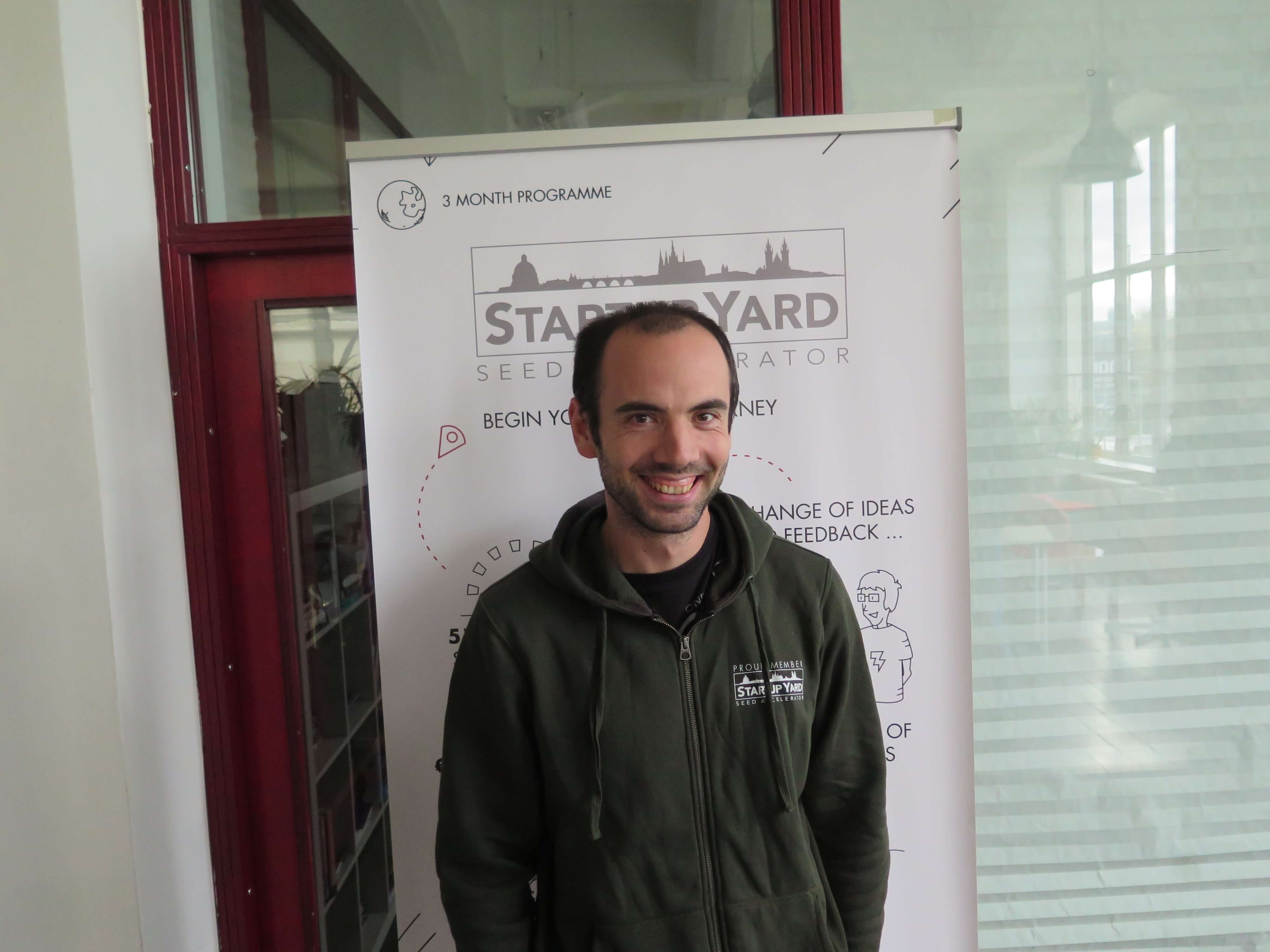
You’ve pivoted away from therapy to sales training. Can you tell us about that shift?
The experience we gained helping people overcome fears is still at the core of what we do. However, we also realized after talking to mentors and industry experts at StartupYard, that staying within the medical context would be very limiting to our ability to have an impact on people in the real world.
With sales training, you can address many of the same issues as with psychotherapy, but you can help many more people overcome their personal limitations. The benefits of VR are still there: it is safe, controllable, easy to repeat, etc. That can work for a lot more than just a fear of heights.
Currently, sales training techniques are quite good, but they require a lot of setup. Role-playing and workshops with hands on feedback are time consuming, hard to repeat, and are likely to be forgotten over time.
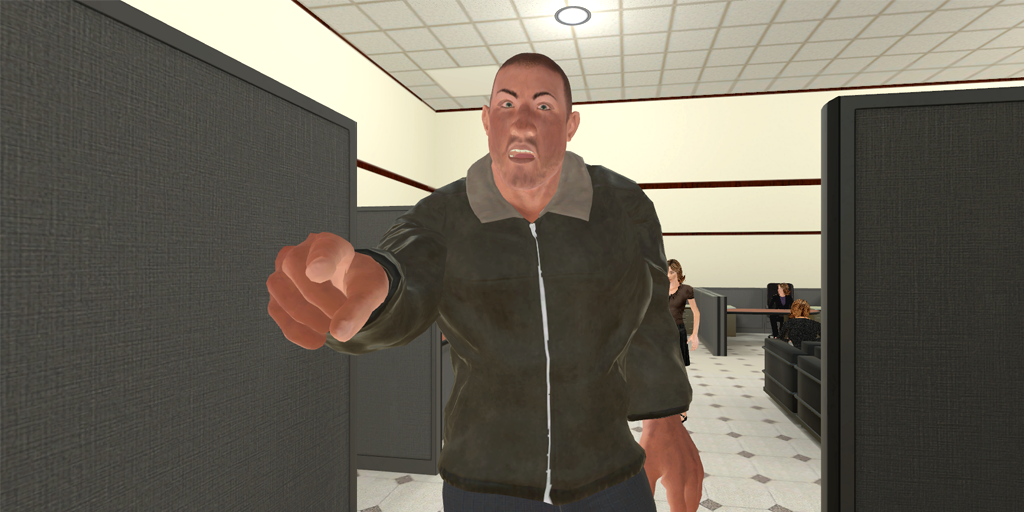
An angry customer in Mindbox
Research shows that after several months, the effect of a training session mostly disappears. If you could follow up on that with controlled re-training and repetition, the insights could be preserved and the training would stick.
A big influence was our new colleague, Serge Dupaux, a former sales training director with a ton of industry experience, who has helped us see the impact VR can make on that kind of work.
So now, MindBox is platform, that allows sales trainers to create VR training modules without coding. Our aim is to make it so easy to do, that an experienced sales coach can let their imagination run wild, and construct really unique challenges that can be shared and repeated even in really large organizations. Mindbox will be the non-coder’s tool for creating those VR training experiences quickly, and getting necessary feedback in the form of analytics, scoring, and other data.
What about VR makes it ideal as an addition to in-person training? Why not simpler methods?
There are easier ways to follow up on training, such as with e-learning, and periodic testing. But these are mostly about knowledge, and not experience.
Typically a sales trainer spends a lot of time simulating situations with the salesperson, doing role playing, and rehearsing strategies. That is quite personal, and can be affected by relationships, the moods of the people, and even the weather or time of day.
If you can add VR as a supplement to this training, then you can eliminate some of these variables and reinforce the important elements of the training. All the salespeople have a chance to work at their best, and experience the same quality of feedback and the same sense of immersion.
With traditional testing, you check knowledge. Here VR can be used to check attitude, comfort levels, and other soft skills that don’t appear in other tests.
How do you see VR becoming a broader part of how we do skill acquisition in companies, or even in schools? What will things look like in 5 years?
Our vision for VR at MindBox is about making it a regular part of somebody’s work life. It’s not just about sales training, but also skill assessment, team building, and skill extension and retraining.
Lloyds Bank already uses VR to assess employees, for example. I think this will happen much more. Of course the benefits of VR assisted training are clear also in dangerous jobs, like firefighting and police work, or in medical training. Already we use very sophisticated flight simulators to assess and train pilots.
I see VR training being a fact of life in 5 years. Everyone will see the benefits and the impact it can have. It will not be everything, but it will be a common tool.
That is why it’s important to us today to create a platform where the most creative uses of this technology can be invented and put in practice quickly, to move VR out of the geek basement, to the mainstream.
Further Reading: StartupYard’s Recent post on why so many VR startups are applying to Accelerators in 2017
Short term, what are the biggest technical challenges facing MindBox, and how do you plan to solve them?
The big problem nowadays is finding good people – technical people. We are looking for Unity3D developers, and it is very hard to find them. At MindBox, we are not looking for “just” an employee or someone who wants to try to work for startup. We are looking for a friend, team member, and a developer with ideas.
How has your experience been at StartupYard? What has surprised you, or particularly challenged you as a founder?
The experience at StartupYard was groundbreaking for us.
It has changed the life of MindBox and the whole team. First of all, we found not only mentors, but also friends, passionate people who are helping us and who are pushing us forward.
Most surprising for us was the team and mentors’ will to help. They don’t just introduce you to someone, they care about your progress and they are come up with ideas to help you as a business and a person. I have never seen something like this.
For us, StartupYard is something, like university and business school in 3 months. We definitely recommend it to every startup, because StartupYard can save you years of work.
How can people get in touch and see how MindBox works for themselves?
Right now, MindBox is in private beta. Trainers or companies can contact us and it would be pleasure for us to meet with them and talk more about VR and how VR can improve the effectiveness of their current sales training programs.
Applications are open for StartupYard Batch 9!
Are you a startup, or an entrepreneur with a great Deep Tech idea?
Applications are now open.
Meet OptioAI: A Fitbit for your Finances
/in Interviews, Life at an Accelerator, Startups/by StartupYardOptioAI is the next generation of personal finance management applications. Though to be fair, it isn’t really an application at all. Instead, the first Georgian startup to be attend StartupYard (a member of the current Batch 8) has a new vision for personal money management: one driven by conversation, rather than calculation.
OptioAI is an AI layer, that stands between the vast troves of data that banks hold about their customers’ activities, and the customers themselves, who can benefit from a deeper understanding of their own relationship with money. The traditional budgeting and expense tracking approach is replaced with a more casual, and more user driven interactive experience, based on chat, or even voice. What’s going on with your money? Now all you have to do is ask.
OptioAI gives its users insights into how their daily finances work, how they spend money, and what they could do to improve their own financial situation. I sat down with CEO and Cofounder Shota Giorgobiani to talk about the future of money management.
Hi Shota, tell us a bit about your team, and how you ended up founding OptioAI.
For me the ideas behind OptioAI go back to me being a kid. I remember how my mother was budgeting and tracking each and every financial transaction in our family. That’s the way she is. Very responsible.
As it was a really tough time in Georgia, it was vital to control your daily spending to survive. I believe most Georgian families were doing the same. Since then times have changed, the situation in Georgia changed, I grew up, but as soon as I got my first salary, I understood how important it is to manage your money.
The solutions I found for that just never fit my way of thinking. I don’t want to manage every cent the way my mother needed to, but I do want some control over my money. I want a middle road.
Once my co-founder and childhood friend George and I were talking about this problem, and discussing our personal approaches to money management. He also had the same problem and developed his own methods.
We found that for us both, the problem always came back to the interface between a person and their finances. It’s always about numbers: amounts, dates, times. But if we’re being honest, this isn’t really the way that most people think about their money.
You can build a fancy budget in spreadsheets, and have all kinds of plans and variables. But should I buy a pizza tonight for a treat? Can I go to the movies Friday night? These questions remain pretty much as hard to answer as before.
I think that’s why a lot of people don’t track their finances, because at the end of the day, it doesn’t help them make daily decisions that much. It just introduces more data.
Slowly, over many discussions, the idea of OptioAI was born. We wanted to offer people a middle road between fully dedicated expense tracking and budgeting, and just flying blind, not knowing what you’ll have a week from now.
We liked concept so much, that decided to start working on that. As a team, we know each other for a long time, we were classmates and we even had a business together in Georgia in the past. Both of us have long-time experience in our industries: I’m a software architect and engineer while George is a banking specialist.
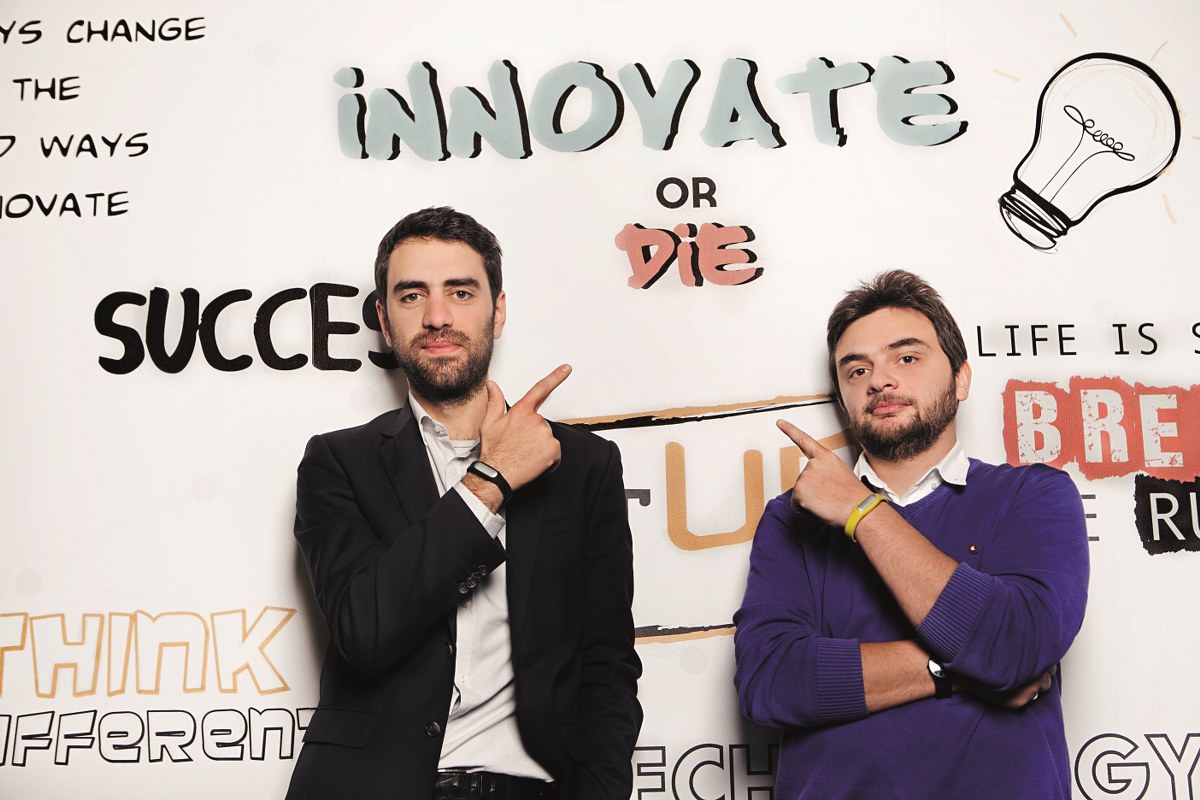
left to right: Optio AI Co-founders George Mirzikashvili and Shota Giorgobiani
How is “AI for Personal Finance” different from what most startups in this space are doing?
Our mission at OptioAI is to make money management simple and accessible for everyone. It should be as easy as asking simple questions to your virtual advisor and getting instant answers.
Imagine, you are at grocery store and want to know how much you can spend on groceries during the week. Or you’re surfing Amazon.com and want to buy a cool new gadget, but aren’t sure you can afford it, or if you need to wait a month.
Those small spending decisions you make on a daily basis don’t always seem very important, but they add up to a lot of uncertainty over time. €5 here, €3 over there. For a working class person, this is the difference between saving and going into debt.
People don’t want to think about it. Our user feedback tells us that these end-of-the-month surprises are the biggest cause of financial stress. Most people don’t know how much they spend on food, for example. It’s usually more than they think.
So you are trying to show people the results of their smaller decisions?
Exactly. People can convince themselves that a few Euros wasted don’t matter. But they do matter, if you do the same thing hundreds of times in a month.
Buying things is an emotional process, and with most budgeting applications, people are asked to be rational. It just doesn’t always work that way. Am I going to spend an hour analysing my finances and making projections to see if I can buy an Apple Watch? Probably not. I’m going to be making excuses for myself about why I need the thing right now. Even if I don’t.
So to change someone’s mentality, you need to appeal to them in that moment with feedback that fits their mindset. “Can I buy an AppleWatch right now? It’s a simple question, and it deserves a simple answer.
So that’s where we connect the dots: we take historical banking data that our users already have and use AI on top of that, to extract insights, understand a user’s lifestyle, make predictions and proactively help them in building better spending habits.
If OptioAI knows you won’t be able to get by this month if you buy that AppleWatch, then it can just tell you: “Listen my friend, it seems like a good idea, but take a day to think about it. Meanwhile, you need some money to eat this month.”
Or maybe it says: “yeah! You’ve been good this month. Time to indulge.” Making decisions is about understanding the individual’s situation. You need to support good decision making overall, not just always tell the person not to spend money.
Why do you think no one has offered your target customers this experience until now?
The mobile banking era showed a lot of people that their banks were not innovating around customer experiences. Many banks have barely changed their mobile apps since first launching them. Today that trend is really coming to a breaking point. People are fed up with their banks, and are more ready than ever to ditch them for a completely new solution.
We’re targeting millennials, who are quickly becoming the most valuable cohort of consumers in western countries. I think there are several reasons their needs have gone unmet. PFM isn’t a part of the core business of traditional banks. Their thinking about their customer relationships is shaped by consumer banking of the 20th century.
But today the cornerstone of consumer banking is not walking into a branch and talking to someone. Millennials don’t do that. They don’t want to do that. They want the bank’s services “a la carte,” picking and choosing for themselves, online, what they are interested in. Banks have been working towards offering PFM solutions, but it’s very hard to commit to something they don’t see as a core activity for them.
Plus, only certain types of customers like using a full PFM. It’s always going to require a lot of attention and time from the user in order to work well.
So first PFM startups emerged, and now I foresee a wave of AI-enabled finance applications that will do for the majority of customers what banks and PFMs can’t do: which is put a human face on your finances, and keep things simple enough that people don’t just give up.
What about the millennial generation is inherently different, and why do they want these new approaches?
In one sense, every generation is different, and in another, they are all the same.
Millennials have the same needs as older generations: they need financial products, cards, savings, loans, etc. But their expectations about how they get those products are completely different.
For millennials who are “digital natives,” everything has always been online, and accessible via computer, and then smartphone, instantaneously. Everything happens now.
Online banking evolved as a kind of version of impersonal in-person banking, which makes sense for someone who is used to in-person banking. Wait in line. Get your card in the mail. 3-5 business days. That’s what banks are like.
To someone who has never banked in person, online banking services make much less sense. For example, why does a transaction take hours or days to execute? That isn’t true in any of the other products that millennials use. Why is money different?
Why can I get packages delivered to my door faster than a wire transfer between two electronic accounts?
Of course it’s because banks used to get away with being slow, and they think they still can. But to people who grew up with a smartphone, 3 business days is a lifetime. It’s ridiculous to them. It’s unacceptable.
Another important thing is how young people use so-called “conversational interfaces.” In the past few years, messaging apps have surpassed every other category, and become the focus of many online activities.
Now younger people want their services to connect with them via messenger, and they don’t want to go to some company’s website and deal with their unique UI, and maybe-maybe-not mobile-friendly interface. Voice assistants like Siri and Alexa are a response to that desire to bypass the traditional web, and get information and answers in real time.
For millennials like myself, time spent scrolling is time wasted. Websites and apps are for the old internet. The new internet is where I am, when I need it, in the form I choose.
In a funny way, it really is something older generations wanted as well. In the past, that personal relationship between you and your banker was an in-person thing. But banks got rid of that, and made themselves faceless companies. Now we are using technology to “re-personalize” them, but around the types of interactions that work best with modern technology and lifestyles.
Millennials want transactional relationships. We want to be understood but not judged. Our generation avoids bureaucracies and hates formalities. We want “personalization at a distance;” experiences made just for us that feel personal, but are also done privately, anonymously, and without judgement from another person.
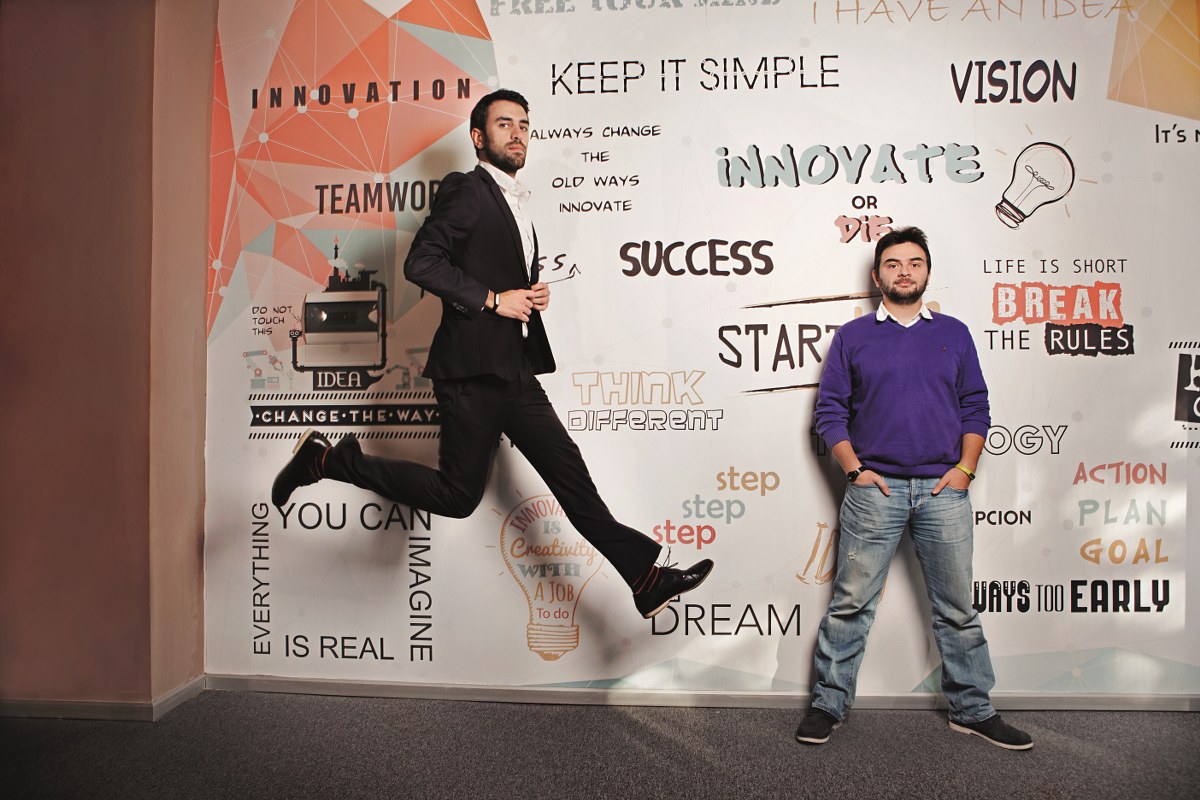
How can banks and PFM companies adapt to serve this new user base? How can they take advantage of what OptioAI is doing?
If there’s enough vision and understanding from their side, I think it’s pretty easy. Banks can even boost the process.
If you are a bank that is trying to adapt for younger users, you need to look at what they are already using and why. Where are they spending their time? That should tell you what seems natural to them, and you should work out new ways to make your services available in a similar way.
OptioAI can help banks to do that. We can provide the “voice” with which the bank speaks to customers. The banks have all the customer data, and they’re not thinking about how that data is useful to the customer. They aren’t putting it in a language the customer understands. That’s an epic mistake.
PFM companies attract a certain kind of person. I think there are some great examples of PFMs that help their customers a lot. OptioAI can also serve as a way to get those users interested in their finances, and willing to take a “deeper dive” using a traditional PFM. We don’t provide the same kind of value as a PFM does. So we could compliment each other well.
Your vision has shifted quite a bit since joining StartupYard. Which of the mentors has had the biggest impact in helping you find this approach?
It would be hard to name one particular mentor or influencer, I think it was more result of teamwork of OptioAI and StartupYard team, as we were “distilling” the information from mentors more or less together, and that’s how we ended up with our current vision.
To be more correct, this process helped us to widen our perspective and correctly articulate what we are doing, I can’t say that we changed our vision by 180 degrees, it was more about understanding and formulating it correctly.
One thing about going to an accelerator, is that a lot of things you think are clear are just not that clear. Even to you. The mentorship process made this painfully clear to us, and we are stronger, and have a stronger vision because of that.
Where do you see OptioAI going in the next year or two?
The next two years are crucial for this industry, and our young company. We have to get great traction, expand to several countries, create a user experience that everyone loves and prove that our vision matches with our users’ needs. And somehow we have to do that all at once.
That makes for a super hard and exciting journey ahead. But we are loving it.
You have a vision for how OptioAI will fit into a “post-app” technology landscape. Can you describe what that experience will be like for your customers?
This post-app future we’re talking about is already arriving now, as we’ve seen.
Today it’s a text communication: you can talk with OptioAI using Facebook messenger, so there’s no special app that you have to download, install and register. If you are on Facebook, you can instantly start using OptioAI, and that’s how easy it is.
Just to give you quick glance of how it looks and feels: Imagine, you have your personal financial assistant: it goes through your banking statements, knows your balance, gets insights and trends from your historical transactions and works 24/7 to help you.
Every morning, it gives you quick glimpse of the previous day, just giving you info about cumulative spending, and then helps you to plan the day. This becomes a routine that continues every day. So it’s about setting up simple, contextual interactions that are not intrusive, and don’t take a big effort on your part.
Of course OptioAI has plenty of other skills, like you can ask in plain text how you spent last week on groceries, or how much you spend on average at Starbucks during the month. The great thing about this AI first approach is that we don’t have to redesign an app or think about the UI much at all: it’s all about what the thing can do, and what it can learn to do.
But for that, just talk with OptioAI, it’s always better to experience it yourself.
You’re based in Georgia. Are there particular quirks about the Georgian market or culture that you would say give your company an advantage or a fresh perspective?
Georgia is a fantastic country in many different aspects, and I think it’s also a great place for starting and testing your product, ideas and concepts.
For us, it’s a big advantage to start there as we know market, culture, and there’s almost no competition in personal finance management. Operating there is way cheaper than in the EU. On the other hand, because of the market size, it’s very hard to scale there, especially for products like OptioAI.
So, home-field advantage yes, but global impact, not so much. This is why we are planning to scale beyond Georgia as fast as possible. We will use it as our test-bed.
How can potential partners reach out and start working with OptioAI today?
We are ready and happy to partner with interesting companies. We are open for conversations to explore how well our product and potential partner needs are aligned. So if there’s any interest, I would be glad to start conversations today. For that you can reach me personally me at shota@optio.ai
But here’s an even better idea: talk to Optio right now on Facebook, and ask for Shota. Then we’ll be connected in the place where our company really lives.
Talk a bit about your experience with StartupYard. What were the surprises, challenges, highs and lows?
It’s not so common that Georgian startups get into EU or US accelerators and we had a long journey before we got our acceptance email from StartupYard (which was one of the most exciting emails on my life).
If you are going for the first time to an accelerator, the information you have is what you can find in Google, a personal recommendation if you know any alumni. It was hard, it was intense, it was exciting and super challenging.
I think the first phase -mentorship sessions- is one of the biggest advantages and differentiators of StartupYard. Meeting 100+ mentors in about 20 days is crazy stuff. There were days, when we had six or seven 45 minute meetings, one after another. It may sound hard (and it is hard) but it’s like putting your brain on steroids. You get so much information, so many opinions and contacts that sometimes you just can’t sleep later in the evening, because you are still analyzing what you have heard.
You get access to the C-level representatives of industry leaders, banking, insurance, car production, other startups, and the list goes on. In one day you may get a connection, that you would spend several months chasing otherwise. And they listen to you! That is the thing: they really want to talk to you, and many mentors are totally open, which is just a completely different experience from chasing them down and getting a meeting yourself.
But it’s also really hard not to lose your focus. If you are fresh startup and have not yet sharpened your vision, it can be challenging to choose from the feedback what’s important and what’s not. You can be tempted to try several directions at the same time, but it’s a mistake.
So you have to listen, analyze and use what makes sense for your startup. And that’s super hard, believe me! That’s where the StartupYard team helps you, they challenge you and go through the whole journey with you to explore the options and later, make it happen. So this is the main reason why someone should come here: you get a sharp vision, you get fantastic connections and exposure, and a super friendly team, which helps you all the time.
On the other hand, you will hardly have time for the product itself, at least during the first month and half, so be ready for that, get enough sleep before the program, as you will spend your nights on the product.
Applications are open for StartupYard Batch 9!
Are you a startup, or an entrepreneur with a great Deep Tech idea?
Applications are now open.
Introducing WayMark: AI for Regulatory Compliance
/in Interviews, Startups, StartupYard News/by StartupYardWaymark Tech is the second company of the StartupYard Batch 8 group to hail from sunny England. Mark Holmes, CEO and Founder of Waymark, left the world of financial services to found his first company at 38, with a unique set of life experiences from the City of London.
Holmes founded Waymark in response to a problem only AI can address: the modern world of regulations in a global economy. It’s an AI layer that sits between a company and millions of regulatory documents, directives, and alerts, and helps compliance officers and others to parse the laws and regulations that matter to them, when it matters to them most.
This not only helps companies to avoid costly mistakes, but levels the playing field, so that companies big and small can compete in a marketplace that is frequently unbalanced in favor of one or the other. Mark sees it as his mission to make regulation accessible and useful, rather than allowing it to become an enormous drag upon innovation, and the technological and business advances that can make people’s lives all over the world easier. I sat down with Mark to talk about his vision of an AI that dreams in regulations.
Mark will pitch Waymark tech along with all 7 of the StartupYard Batch 8 Startups at our DemoDay: November 22nd, in Prague. Care to join us?
Hi Mark, how did you get into RegTech (Regulation Technology) to begin with? Tell us how you decided to found a startup to attack that problem.
Often when we think about regulation, especially RegTech, it’s in the realm of Financial Services. That’s where I started.
My father worked in the City of London as Head of Investments for a large commercial property firm, and I spent most of my career there as well. I worked with Morgan Stanley in the equity derivatives department, then Nomura, Deutsche Bank, and HSBC.
I grew up around that culture, which I think has been really valuable to me in my career, and also in what I’m doing now, which is a lot about solving the day-to-day frustrations of people just like I used to be, or my father was.
Over time, I was pulled into focusing on financial technologies, and selling products for big banks and asset managers. During my time at a technology vendor, a lot of my clients were treating me as a pro bono consultant – trying to find out information on regulations and how other clients were approaching them.
As I looked deeper, I realised they were all dealing with regulations manually and knowledge sharing was an informal process. I felt there was a way technology could help with this. I also began to see that it could be applied to other industries as well.

For your customers, what are the pain points that Waymark solves? Why can’t those be solved using existing approaches?
Ever increasing regulations and more complexity is proving just too much for the Industry to handle. The current approach is to throw bodies at the problem, but this is costly and just not scaleable – especially as the businesses grow their product lines and expand into new territories, which brings about more regulatory pressure.
You have a few forces acting at once to create this pressure. The benefits of scale due to mobile technology and e-commerce, as well as the easy transfer of knowledge around the world, means that companies more and more see themselves as global entities. They can execute strategies across many regions like never before.
The goal of a big corporation is to spread the best practices and products to all its markets, to maximize its value. These markets can look similar from the perspective of the product team, or the marketing team, but they are sometimes alien planets in terms of legal issues and regulatory oversight.
As globalization has gone on, regulation has not really slowed down. The complexity of regulations act as a bottleneck for big companies to execute their strategies globally. It’s like having one product idea, and then having to independently develop it in every market you serve. That’s a ton of work, and it can make sharing innovation globally not worth the effort and time.
Can you give us an idea of what that bottleneck looks like?
Ok, let’s say you’re a vineyard in Napa, California, and you have a wine that just knocks people’s socks off. Wine dealers from Europe are constantly buying small batches, and you want to go directly to the European market yourself.
You’re making money, you know wine. But hang on. You have a laundry list of obstacles to overcome. There are 28 countries in the EU, and all of them have a page just like this one on the website of the U.S. Alcohol and Tobacco Trade and Tax Bureau.
What do you have to do to export to any one of those countries? You have to meet a unique set of requirements: Labeling requirements, winemaking standards, import procedures, local licensing, taxes and tariffs, identity and business documents, recycling standards, marketing regulations and limitations, contracts with distributors according to local law… and on and on.
That is of course ignoring the fact that many nations protect their own industries by making competition harder for foreign companies.
Why can’t get you get a nice wine from a small vineyard in Napa? That’s why. Not because you wouldn’t pay for it, but because it’s just too much work.
In the end, that is a shame for consumers and businesses both. We do not have access to all the innovations and products we can, not for a sound business reason, but because the regulatory landscape is too complicated.
Why are regulations becoming more complex, instead of streamlined along with the global economy?
An important question. The truth is that this is as much about politics as about protecting people from harm. Regulations are absolutely necessary to ensure that profit motives are not in total control of what corporations do.
Plus, regulation is increasingly local, while corporations are increasingly global. It used to be that broad regulation covered many smaller companies. Now a single large company must be compliant with a patchwork of regulations across many territories.
Regulations are easy to write, but their effects are hard to predict, so we move in a bit of a cycle. We have a bunch of regulations and directives, and slowly businesses find ways to get around them and innovate faster, and that leads to problems. Then a new set of directives come in and local regulators have to “right the ship.” The corporations then have to scramble to get into compliance again and clean up the mess.
Since the financial crisis in 2008 for example, there has been an increase of 492% in the number of regulations published in Europe and the US. They are wide ranging and touch every aspect of a business. They require a sea change in technology used, in processes and in policies. In the UK, the introduction of the Senior Managers regime means that managers now have to be fully accountable for what goes on – so liability has shifted to personnel rather than the company.
That is why I founded Waymark. It’s an AI layer that lives within a company’s existing information system, and augments it by connecting the company’s activities to relevant regulations. Moreover, it continually monitors the legal landscape, updating compliance officers continuously on new developments.
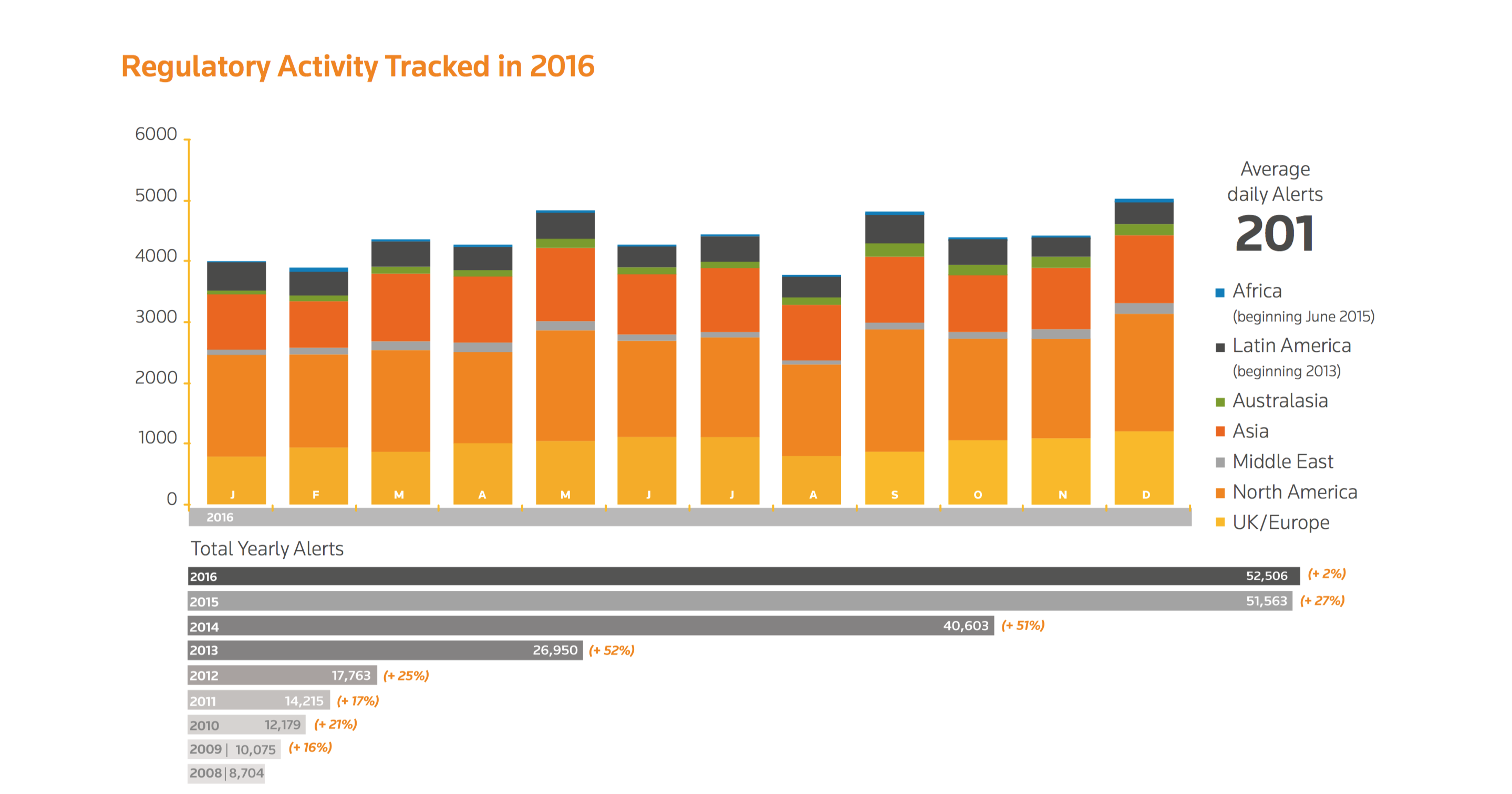
Thomson Reuters [graphic], tracked 201 new regulatory alerts a day in their report on the Cost of Compliance 2017. Companies need that data to be put into actionable format, and addressed directly to the people who it will effect immediately.
What does that look like? Well in financial services alone, there will likely be 200 million pages of regulations globally by 2020, according to Regtech Rising. That volume will be just unmanageable for big institutions and corporations. They will have to have an active AI layer between them and the mass of regulations to keep up.
What does it look like if a company doesn’t use this kind of RegTech in the future?
Story time: some people might remember in the late 90s, that NASA sent a spacecraft to Mars called the Mars Climate Orbiter. What is memorable about that project is that it failed, when the craft crashed during orbital insertion.
What was the glitch? Well, NASA had a contract with Lockheed to provide some of the ground equipment used in the mission. One of those pieces of equipment was using software programmed in non-SI units (pounds and feet), instead of SI (Metric) units.
The agreement between NASA and Lockheed was solid, but it was not properly implemented across the whole operation at Lockheed. The key people just didn’t ever get on the same page. That’s a straightforward example of how a big enterprise can get killed by a small mistake, that Waymark could solve.
In this case, an AI that checks the software against the requirements, to make sure it follows the agreement, would have caught the error easily. Regulations are many times more complex than that, so it becomes nearly impossible to be compliant, and still deliver products to the market and not get sued.
Some would say it’s now impossible altogether. For every dollar a bank invests in compliance, currently, they pay three dollars in fines. That’s how bad it can be. We pay the cost as consumers, one way or the other, with higher prices or with non-compliant products.
Let’s talk about the role of startups in fintech and other industries: how are these new companies using the regulatory environment to their advantage? What can big firms do about it?
Technology-driven nonbank companies, aka “Fintechs” work in a regulatory void – they are not subject to the same regulatory pressures as the traditional big bank incumbents.
This is changing with regulators working out best approaches to regulate FinTech without stifling the innovation. Big firms can turn this challenge into an opportunity by collaborating with, rather than competing against these FinTech firms. Same goes for other industries, such as professional services. The core skill is not in technology, so by partnering with a tech firm, both sides can benefit and ultimately the client is the winner.
With Waymark, for example, a big firm can eliminate a significant part of the process of integrating a new service into their offering to clients. Waymark is an AI layer that lives on your existing software, so if you are suddenly doing something that is forbidden by regulations, you’ll know right away.
Think of GDPR, the new European Data Privacy framework. On day one, it’s likely that a huge number of big companies will not be compliant. How can they move forward with new products if they’re spending all their time catching up with the old ones?
We don’t want that day to be the end of innovation in Europe, so these companies need to adopt new standards, but also new approaches to compliance. They need to get ahead of changes to compete.
You noted that increasing regulatory complexity is going to make product release cycles slower for big firms. Why is that? How will you fix it?
As firms expand their product scope and geographical reach, so they will have to be aware of the regulations in many regions imposed on new products. This increases complexity within an organisation and so will slow release cycles down.
It is one thing to create a global supply chain for, say, a new version of the iPhone. But it is something else again to have a unique manufacturing and supply process for every single market you’re serving.
That’s a big reason why industries push for alignment of regulations, and also seek to make products that meet regulatory requirements everywhere at the same time.
But that is just another layer of complexity, because it means when you’re designing the product, you have to design it with dozens of different regulatory systems in mind. That is not easy.
What Waymark allows these companies and the regulatory consultants working with them to do, is get product-specific feedback across many different legal systems at once, so they can build something that is broadly compliant with their target markets from the beginning.
If you want to make one particular component using a particular substance, you’ll be able to see, from the drawing board stage, the regulatory problems that decision can cause you. You can address that problem from day one, instead of having to deal with regulators at the last minute, long after any changes can be made.
What kinds of customers is Waymark looking for today? Who is the ideal early-stage partner?
We are looking for Professional Service firms such as management consultants or law firms. People who appreciate how much promise there is in AI for regulatory compliance, and are already experiencing serious pain in keeping up with regulations.
An ideal early stage partner is one who has clients in highly regulated industries and is looking for a way to provide a real value added service to their client base.
In the medium to long term, what industries or customer set do you want to target, and why?
We are focussed on Financial Services, Life Sciences and Energy. The way our platform is designed, however allows us to move into other industry verticals swiftly and so would like to partner with someone in FMCG or Telecoms as well.
Soon, I expect that this kind of technology is going to be necessary across essentially all industries and large enterprises of any kind. Once the early-adopting companies show others how much faster and more efficient they can be thanks to AI for regulation, others will have no choice but to implement their own solutions.
Where do you see regulations in 5-10 years, when AI will possibly have a huge day-to-day influence on company decisions?
Interesting question. AI itself will be regulated and I think we will never be at a point where a company’s decisions are solely made by AI. It will be important to be able to show how a decision was made rather than just a black box.
I think in practical terms, regulations will be machine readable and directly plugged into activities – i.e would work on a real time basis, moving in line with business activities. That would mean, for example, that a factory that is making products would be directly connected with regulators, meaning that changes can be made very quickly when they are needed.
You could imagine a country’s whole supply chain being able to react to air conditions or power demands instantly, and regulators being able to tweak regulations on a constant basis to make them work better.
Back to the present, how has your experience been at StartupYard? What drove you to choose Prague as a second home for the company?
It has been very worthwhile moving to Prague for 3 months. The connections, the clarification and validation of ideas has been invaluable. We are now a proper company and not just a couple of people with a platform. We decided we needed a presence on the Continent due to Brexit driving companies in this direction, and Prague is a good base to give access to CEE.
We would be remiss here if we didn’t talk about Brexit. What will Waymark’s role be in helping UK and EU companies deal with the chaos that Brexit is likely to bring large companies on both sides of the channel?
The chaos and uncertainty around what regulations apply and those that no longer apply will be a big part of the problem. Also the possibility of regulatory arbitrage – i.e. if moving from UK, which regulatory regime would be better to move to for your business, will be a big opportunity.
Waymark will be able to help people play out these what-if scenarios to optimise their business. So in effect -not that I’m happy about it- Brexit is just one more argument in favor of using Waymark for regulatory compliance.
The current system, built on individuals accumulating knowledge by picking through documents for years, is very vulnerable to big changes. If tomorrow Brexit happens, then all that systemic knowledge is in doubt, and very hard to replace.
What kinds of customers or partners do you want to get in touch with you today? How can they reach you?
We are primarily looking to partner with Professional Service firms but also SMB’s looking for help with regulations. They can reach us by mail: mark@waymark.tech or via our website: www.waymark.tech
Mark will pitch Waymark tech along with all 7 of the StartupYard Batch 8 Startups at our DemoDay: November 22nd, in Prague. Care to join us?
StartupYard Presents Retino: Making Returns Great Again
/in Life at an Accelerator, Startups, StartupYard News/by StartupYardRetino, another of the Czech teams in StartupYard Batch 8, is changing the game for e-commerce customer service in Europe, and maybe elsewhere as well. Retino is a fully functional “reverse logistics” platform, that can integrate seamlessly with existing e-commerce platform software to make returns management a breeze, rather than a headache.
In the past, returns were a personalized experience. You took the goods back to the shop, and got your money back (or something in exchange). But today, with more shopping than ever occurring online, returns experiences are only getting harder to manage.
Why are returns so hard in e-commerce? Because each return has the potential to be unique, and require special attention. Moreover, a return process that works can significantly improve brand image for an e-shop, while a bad returns experience can spoil a customer relationship forever. Enter Petr Boros, Founder and CEO at Retino, the Czech tech company making returns great once again.
I sat down with Petr recently to discuss his journey to founding Retino, and why returns are a looming problem for e-commerce players here and across the world.
Hi Petr, how did you get the idea for Retino? Was it based on your previous experience in building a successful e-commerce company?
It happened in February earlier this year. I was still running the e-shop we had built with my partner Daniel Kšíkal, but we were already in the process of selling the company at the time, so I knew that I would be free in a couple of months and hungry to start another company.
I didn’t want to stop challenging myself in business.
Building software for e-commerce sounded good to me. I wanted to do something related to e-commerce, because I had experience in the field. I also I wanted to go more technical, because I was trained in computer science and, technology is where my heart is.
The original idea for Retino is actually not mine. I remember we were having lunch with my friend Peter Hajduček, CEO of Footshop, one of the fastest growing e-commerce companies in the region. We were discussing many business ideas and one of them was solving low customer satisfaction in returns and claims.
So that was the initial spark. Then I thought about it for about 3 more months until we sold our previous company. After the exit, I jumped right into Retino: market research, talking with prospective customers, developing the platform, hiring people, and applying to StartupYard…
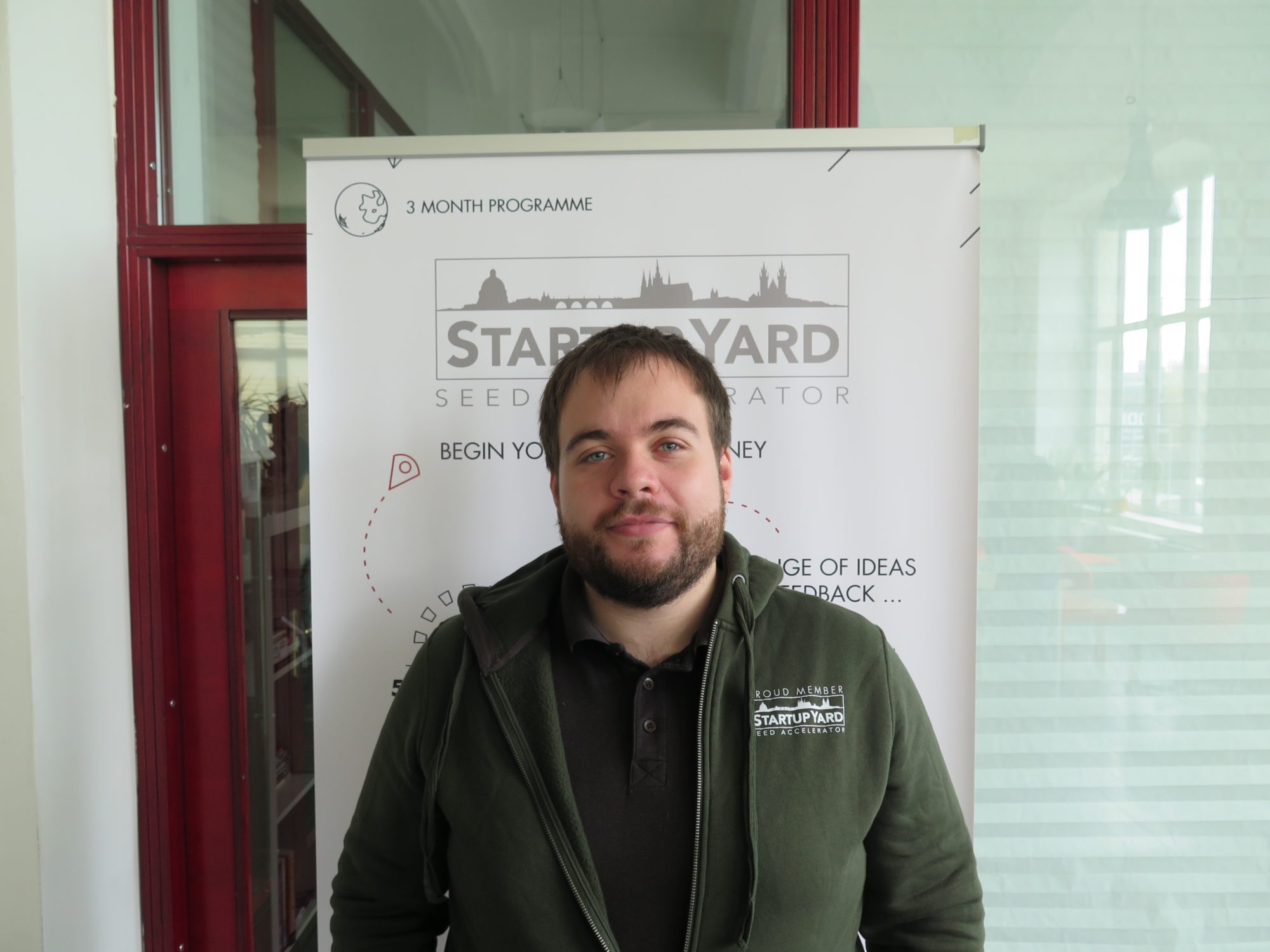
Why are returns and reverse-logistics becoming an even bigger problem today than they were a few years ago?
There are two drivers. First, e-commerce grows by double digits every year. Five years ago, the total revenue of Czech e-commerce was about 40 billion CZK. This year, we are well over 100 billion CZK (€4 billion). So the magnitude of the problem is bigger simply because the market is bigger.
Second, return rates inside e-commerce grow by double digits as well. Five years ago, customers were not returning as much. If you ordered a hoodie and it was too small for you, you would probably just give it to your brother. That’s not the case today. Customers feel much more entitled to great service, and the right to return things that aren’t perfect.
For instance, after the emergence of ZOOT, more and more online shoppers are accepting returning as a new standard. The Czech market is an interesting case, because Amazon and big-box e-commerce players have not really penetrated as much. Our market is smaller, but these brands have still educated the market about the ideal customer experience, and people expect the same level of service as others enjoy in the U.S. or Germany.
Many e-shops don’t think about returns as a problem. But what effect does a bad return policy and system have on a retailer?
I know this from my own experience. When you run an online shop, you focus 100% on the “forward.” That is, getting the people on your website, having them purchase your products, and delivering the goods to them.
In the beginning, this makes sense. The problem is that you will not be able to acquire more and more customers with reasonable cost. Particularly if you are regionally limited. You have to retain your customers.
Making returns is a critical spot in the customer journey. Not every customer reaches this point, but when they do, it matters very much how you solve their problem. The rules of retail still apply as they always have.
A customer satisfied with the return process will spend 4x as much in the next two years at your shop. This information alone should convince the e-shops to rethink their returns.
But there’s more. For example, did you know that 66% of customers check the return policy before placing the order? Yet, the majority of e-shops still “hide” the policy and word it in legal gibberish. These e-shops are pushing their customers out the door by refusing to give them vital information. Once again, trust matters more when anyone can run an e-shop.
Also important to consider is that 5 years ago, Facebook and other social media penetration was nowhere near what it is today. Now almost half of the Czech population uses Facebook alone – and almost one third of the whole planet does. That gives customers a lot more leverage over online retailers than they had before, because bad news (or a bad review) travels fast.
Are there some examples of companies that have tackled the returns problem in a creative way?
Research shows that 60% of customers keep unwanted products because returns are too hard. At first sight, this might seem like a good news for e-shops, because they don’t have to process them and offer the refunds. But guess what? That customer who failed to return the product will likely never make another purchase on that same shop again. It doesn’t even matter if it isn’t the e-shop’s fault. The experience just sours the relationship.
I was talking with a director of another large fashion store recently, and he told me that their return rates doubled shortly after ZOOT came to the market with a great returns process. Think of that – this is how fast the customer landscape can shift. What ZOOT did was to introduce a mix of online/offline retail that suited their customers much better.
They started by providing pickup points for their products, where the customer could also quickly return a product if it didn’t fit. That made shipping faster, and returns much easier, because customers never had to deal with the post at all. More work for the company, but much less hassle for the consumer.
The guy I mentioned was very angry about this. My experience is that being angry is not the winning approach. The paradigm is shifting. You have to offer a super-nice return process (so that you acquire and retain customers) and you have to be able to process the returns with a very low overhead (so that you actually make some money).
If you have the capacity to do this yourself, go ahead. If not, go Retino!
So for you, this is more about the mentality the e-shops have, and not the technology they’re using?
The technology follows the mentality. If you haven’t built a good return system, it’s because you aren’t focused on it. If you don’t invest in your returns process, it will be a mess. If it is a mess, it is because you don’t care if it works or not. It all goes back to the mentality.
I’ll share a personal story with you: About 10 years ago, my family ordered a new computer from CZC, which as you may know was one of the early Czech e-commerce platforms, founded by Josef Matějka.
In that time, it was still more common to buy electronics from a local retailer, not e-shops, so this was a kind of a big deal. Anyway, something went wrong on their side, and they were unable to deliver the computer on the date they promised. That was a problem as we were leaving for abroad and would not be back for some time.
I bet this sounds like a familiar story to a lot of people. But the amazing part is what happened next. We called and told them the situation. Somebody from CZC, and I am not sure, but it could have been Matějka himself, drove over 400km to deliver that computer in person. I personally met them and got the computer at about 10pm that same day.
You see, this happened over 10 years ago and I still remember it. Back then, I told everyone what happened, and CZC was for a long time my first choice when buying electronics.
That says so much about who Matějka is, and about the company he was trying to build, that they would go so far to fix a mistake they made. It might not even have been their own fault, but they took our needs very seriously. They took responsibility for keeping their promises.
Obviously I can’t be the only person who had such a good experience with them, so their success over the years has never surprised me. That customer-first thinking is a principle that any business can adopt today, without changes in technology. Technology only helps us to do this, but it does not change our mentality.
Today you’re focusing on the local e-commerce market. What will be Retino’s focus for the future? WIll you explore different business models, or expand geographically?
Both. There are so many things to do in returns, but we have to prioritize. Right now we are focusing our salesforce on the Czech and Slovak markets.
That does not mean that we cover only the Czech and Slovak market. One of our pilots operates in 13 markets and we have to be able to run the return process in all of them, so we are very well technically prepared for the expansion. It’s just that our salesforce is limited for now, and there’s still much to do in the local market.
We have international ambitions, and I think our model can work very well in all EU countries. This is especially true when you consider the new GDPR regulations on privacy and data in Europe. You’ll just have to trust me on this: few e-commerce platforms are fully compliant yet, and they will struggle to be compliant if they don’t adopt new software like Retino, which is fully compliant.
We also have put a lot of thought into vertical scalability, and we have come with different business models and revenue streams. Some of them are for an even larger business than what we are doing at this moment. You’ll see…
A look at Retino’s Simple Returns Management Platform:
What would you say are the top 2-3 mistakes that most e-commerce companies make when it comes to their returns process and policies? How can they improve today?
An unhappy customer turned happy is more valuable than just a happy customer. We see large corporates in banking or telcos actually deliberately “doing a little wrong” to their customers so that later they can fix them and gain more loyalty. Consumers see apologies and mea-culpas as a humanizing thing, and they do appreciate a brand that is not afraid to be human, admit some mistakes and offer compensation.
I’m not telling you to do this intentionally, but the principle holds. If you have an e-shop, every time you see a customer unhappy with your product, try to convert him back. If the customer is nice, do whatever you can to achieve this, and don’t worry about how much it costs you. It will cost more not to do it.
I would say that this mindset shift has to occur before anything else, but if you want a couple of “quick fixes”, consider this:
1. A return policy should be clearly visible and not hidden in your general terms and conditions. The best shops actually show their policy on the product detail page next to price and delivery date.
2. When you physically get the goods back, always notify the customer that you received them. We see many shops not doing this, although it’s very important for the customer.
3. Never delegate your responsibility to your dealer or manufacturer. That is incredibly frustrating and trust-killing for customers. It is you who agreed with your customer and it is your reputation on the line. Take charge of it.
What kinds of early customers are you looking for, and how can they start working with Retino?
We are looking for customers who want to do their returns and claims right, and we’ll be happy to help them with that. More than that, we want customers who are seeking to differentiate themselves in terms of great service.
Our ideal customers understand intuitively that this is the way they should approach returns, but they don’t have the time or resources to do it themselves. Their current system may be a mess, or just not very efficient, but they are ready to do better. Retino represents thousands of man-hours of work and a lot of thought and care. To replicate it, much less maintain it, would cost an e-shop a lot of resources on an ongoing basis.
Our solution stack makes sense for most shops processing 20-2000 monthly returns. Integrating Retino is easy and can be done in one day, no developer needed in the process. With the largest shops, we also work on custom integrations to fully unleash the potential of our automation service.
We ship new features every week or so and all our customers benefit from that with no extra cost. This is a problem best solved by specialists.
The best way how to start with us is to fill our demo request form at www.retino.io or simply drop us a line at sales@retino.io. We’ll get in touch with you, discuss your process and issues, see if we can help and set up a demo.
Tell us a bit about your experience with StartupYard so far. What have been the biggest surprises, or challenges you’ve faced since you started?
The StartupYard team is composed of excellent people who know what they’re doing. They also see personal fit as important measure. So, even though the acceleration program is very demanding, it is a happy place to work at and we are basically one large family.
I knew that StartupYard’s network of mentors is extensive (and it was the main reason why I applied for the program), but it actually exceeded my expectations. There is virtually everyone relevant for any business in this region in the +1 network of StartupYard’s mentors.
I found the mentoring sessions very important, because 1. mentors asked me questions that I didn’t really want to hear, but they were super important for steering the business in the right direction, and 2. we got a lot of good leads for our business that we would have hard time getting otherwise at this stage.
I’m thankful for Retino being invited to StartupYard and I’m happy to work with the StartupYard team every day. If you have a strong team and a solid idea, I would very much recommend you applying for StartupYard.
Most importantly, I would like to thank my team – Karolína, Kryštof, Vojta and Radim – for bearing with me during the program. Acceleration is tough and time-consuming, but they all proved to be very self-sufficient. Even though I was not always available, they worked hard to push our story further every day. I’m very grateful for having such an awesome team. Thank you!
Retino and the Other Batch 8 Startups will Pitch at StartupYard’s DemoDay: November 22, in Prague
RentRocket: The New World of Renting
/in Interviews, Life at an Accelerator, Startups, StartupYard News/by StartupYardRentRocket, led by CoFounder and CEO Klara Flisnikova, joins StartupYard as a member of Batch 8. The team behind RentRocket comes from Zonky, the Czech peer-to-peer lending platform that pioneered the concept in Central Europe.
What is RentRocket? It’s more than a real-estate platform, or a property management system. Flisnikova intends to digitize the rental process from end-to-end, allowing property owners to list properties, screen and manage tenants, and handle all aspects of the transaction in one place. To do that, RentRocket is starting with a simple core value proposition: an easy to use, effective screening tool for prospective renters, that provides a reliable history of an individual, and ensures that they are trustworthy and capable of keeping commitments.
RentRocket is currently in the final stages of development for its public platform, which will launch in the coming weeks, and be available to landlords in the Czech Republic as a first step. Klara will pitch RentRocket at StartupYard DemoDay Batch 8, on November 22nd, in Prague.
I sat down with Klara to talk about the thinking behind RentRocket, her experiences as a landlord, and how she founded her first startup:

Hi Klara, tell us a bit about yourself, and how you came up with the idea behind RentRocket.
My dad was in the construction business since before I can remember, and I grew up around the construction sites. To see things always under construction and undergoing massive change, I think, gave me insights into the hidden workings of the world around me most kids don’t experience.
Later on my family acquired some properties in Prague, and when I moved to Prague for university it became my job to take care of them. Having grown up around this business, I could see right away that the property management companies and real estate agencies my parents had used were not providing a lot of value. I got rid of them both, and started renting the properties out myself.
So I learned the hard way, and met lots of different kinds of people in the process. Many of them nice, some of them not so much. One of the things about being a property owner that you don’t realize at the beginning is that it’s a very personal thing. You deal with people’s homes and their personal circumstances. You see things others don’t see, and you deal with people’s problems, including the ones they don’t show to others.
So RentRocket is based on your experiences?
Definitely. Property management is a business, but it’s also very personal. It is the renters home, but your property – that is a situation ripe for conflicts. You see people’s bad sides as well and I began to wonder how to fix this. So I started to choose my tenants more carefully, evaluating them and setting the right expectations from the very beginning. There is nothing worse than a promise you cannot keep. This is a business I think a lot of tech people don’t understand the way longtime owners do.
That’s why RentRocket is focused first on establishing a basis of trust between renters and owners. That basis is in data: letting owners and renters both know that their agreements are on a good footing, and that both parties have a good background, and can be trusted. We do that right now by providing background checks of tenants, but in the long term, the qualities of the owners are also very important. Good renters deserve good landlords, and vice versa.
After university I went through KPMG to Zonky, still renting in the meantime. At Zonky I worked as a data analyst and was responsible for reporting. And it hit me, that the process I used for tenant selection is totally similar to loan approval. The same data that affects someone’s credit obviously also affects their ability to pay rent. In the US and other countries, credit checks are standard for renters. Bad credit is a big problem.
At Zonky I also met Petr, without whom I absolutely couldn’t build RentRocket. Petr and I worked closely while analysing data flows in the backend systems at Zonky. And one day I told him about my project, and that I would like to finally launch it. He immediately took interest and I knew from my experience, that he is hard worker and someone I can trust. When I proposed the opportunity to join Startupyard he did not hesitate to jump on. And here we are.
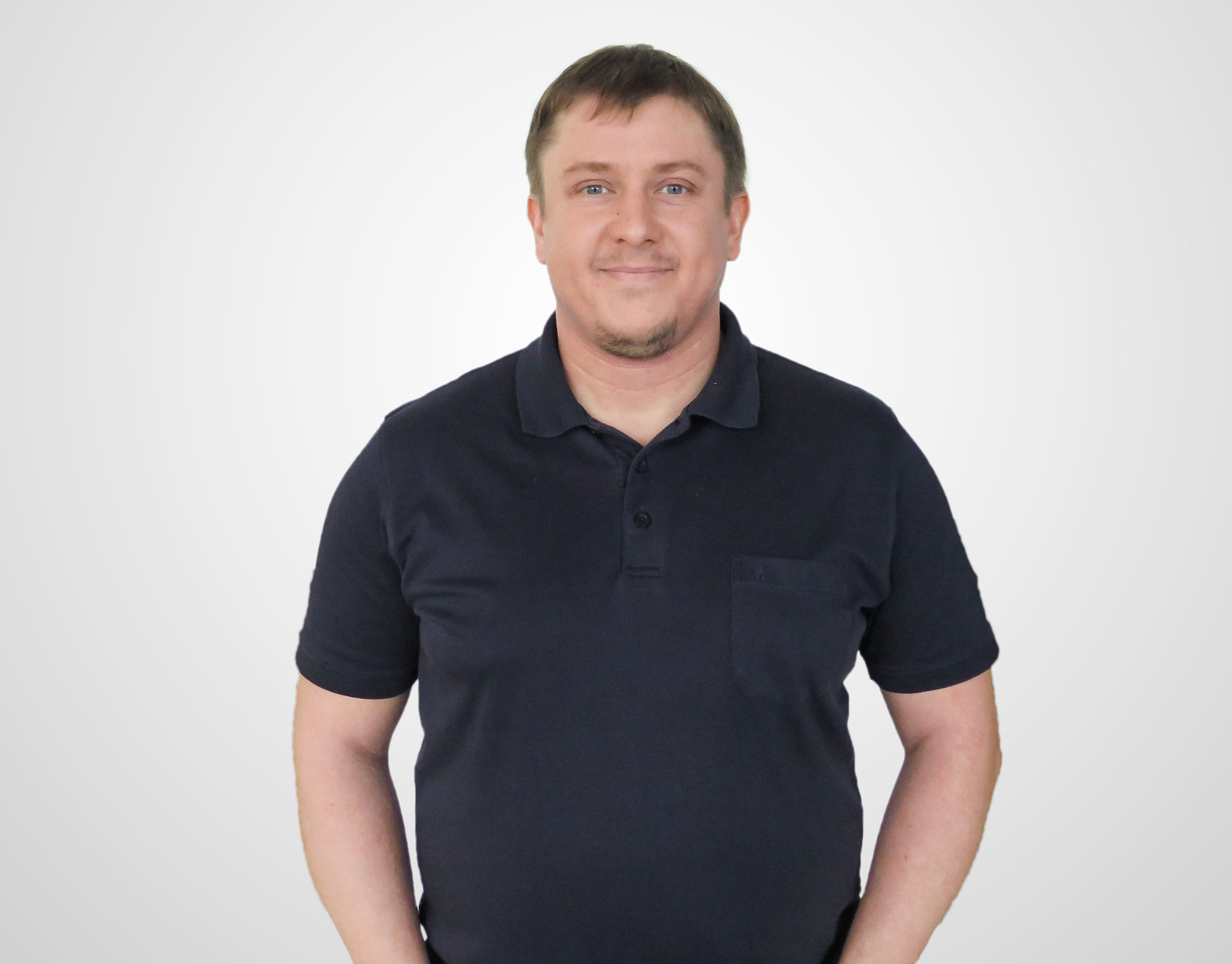
We struggled together for a long time to come up with the name RentRocket. What about the name really appealed to you, and told a story about what you’re doing?
Finding a name was really hard for me, because originally I thought I was good at names and that creativity will solve everything.
But being realistic, real estate is an unbelievably crowded space. There are all kinds of services, good and bad, and it’s very hard to differentiate. So we came up with more than 100 names, and checked the viability of all of them.
I wanted something that would not be too closely connected with flat or homes. I also wanted to highlight our scientific approach and the new sort of renting experience we want to promote. That’s why chose to be a Rocket. RentRocket!
You mentioned you were a data & reporting manager at Zonky before founding your own company, how did that experience inform what you decided to do with RentRocket?
Zonky was totally the most challenging, complex and enriching experience I could get and perfect foundation to start my own thing. I learned so much about product creation, leadership, development, customer service and much more.
Working with so many hard working people, together with Lucie behind the wheel setting up a truly motivating atmosphere, was an amazing journey. Also the way the whole community was created – the honesty and transparency – is something I would love to replicate in my own company.
You could literally see people became so engaged in creation of the platform, that it became a part of company culture to cooperate on the development with the most engaged ones. That culture as it was developed at Zonky is a big influence on me now. The whole grand idea of “from people to people” really came true in that sense.
In a two-sided marketplace, companies tend to focus on one side or the other: Renter or Tenant. What is your focus, and how did you conclude that it’s the right one?
It is always a chicken or egg question, right? But if you look at companies who do it well – such as Airbnb or Uber – they always start with supply – eg. homes or cars. You start with the scarce side of the marketplace, try to get on board early adopters and build a critical mass of supply. Once you reached your critical mass you may focus on pairing up the demand.
We have to think about how different stakeholders in the property market are motivated. Renters have more short-term motivations, and owners think more long-term. So long-term is where we need to be first.
You mentioned how crowded the market is. Airbnb, other short-term platforms, not to mention agencies and management companies. What is different about your approach? What do you see as your competition?
You are totally right, but I am glad that so many players are doing well in this market. It proves that there is a lot of demand for better solutions. We are rather at the beginning of big changes, than at the end, in my view.
The rental market is still very unstructured and uncultivated, in the Czech Republic especially, compared to western markets. That is probably true of many regional markets that are not under the same pressure as bigger cities like in New York or London. Still there are problems, but there are also more clear expectations from all sides. In smaller markets like Prague, it has not been really systematized.
Our goal is to completely digitalize the rental process. Moreover, there is a lot of potential to be unlocked once you’ve done that.
Of course I am aware that companies such as Ulovdomov or Flatio could be our direct competition, but I think that maybe we can help each other too. They solve slightly different problems, and like many players, they see their value in short-term problem solving. We see our role as a long-term value creator.
On the other hand, I am not so keen to work of rental agencies – our traditional competitor. . But even here, I see a chance for us to have an impact. My aim is to bring the best service possible to our customers, whichever way they choose to manage their properties.
What have been some of your direct experiences with being a landlord, that have most informed your decisions about RentRocket, and what the company focuses on?
As I mentioned previously, I’ve had some pretty tough experiences as a landlord.
The flats not being returned in a good state, flats deserted in the middle of the rental period, and I could go on and on. The first aim of RentRocket: to stop that situation from happening from the beginning, by helping landlords pick tenants they can trust.
As they say, some people always have a story about why they can’t pay, or why damage isn’t their fault, or why they need to leave suddenly, or whatever it is. All this sparks frustration and anger on both sides. What I learned that most of these situations could be prevented – either on the owner’s side by better screening, or on the tenant side by better education and communication.
Most renters and landlords have their own horror stories. What is your worst story about being a landlord?
The worst one comes from the times when I started with property management, and this particular tenant was supplied by an agency. One of our flats was devastated by a Great Dane, which was regularly left by its owner in the flat for days. It was horrific, incredible cruelty for no reason I could ever understand. Why have a dog if you refuse to take care of it?
Anyway, you would not believe how hard it is to get the competent authorities to do something about it. Once the flat was opened by the Police and Vet Administrator, the dog was not there anymore, the flat was totally wrecked, with crazy holes scratched on the inside of the door. Total disaster, complete reconstruction was necessary.
Which types of customers are you interested in addressing in the near-term? How will you reach out to them and engage them now?
At the beginning we are focusing on semi-professional owners; those who already have some experience with renting, and to agencies which want to do a better job on tenant selection.
What is important to us is a close connection with our customers, especially now at the beginning when we need to establish ourselves and gain the trust.
We plan to exploit our networks first, get feedback on our product and then continue accordingly with long tail user acquisition. We want to build a sustainable, long term business that can be replicated in other markets.
Looking toward the future, how do you see RentRocket’s path forward? Will you focus on certain types of markets (like cities), or go instead for geographic regions with similar legal systems and traditions?
Definitely I see RentRocket as a purely online service focused on medium-sized to big urban markets with an excess of demand, which will allow us to expand rapidly.
Once we reach a critical mass of users and learn how to acquire a meaningful share of the Czech market, we would like to try other cities in the CEE region. Still, our ambition is to be global, and available in many markets.
Cracking how to win over a single market is a key thing. There is no global leader in long-term rental “proptech” the way there is in transportation or short-term rentals (Uber, Airbnb), and I think this is because it is a more complex day-to-day problem. Airbnb’s big innovation was the way it allowed people to discover destinations, and management was an afterthought to that. It was about opportunity, not necessarily long-term thinking.
Our focus is on great management experiences from the beginning, and long term value.
What has been your experience at StartupYard? How has your view of your business changed during the acceleration process?
Startupyard is the best kickstarter ever for a startup.
We joined StartupYard with just a small team, and our ideas. The accelerator focuses you, gives you a mission and puts you in the flow of building your company. The mentorship is a big challenge, but it makes everything about what you do more urgent and more clear over time.
The accelerator is a very tough experience, and there are a lot of moments where you question yourself and what you’re doing. But I think we have become stronger, and we have moved much faster and in a clearer direction than we could have done alone. I have found the mentoring and feedback to be motivating. Hard work pays off, and here you definitely work as hard as you can.
If there is one piece of advice you would give to landlords, and one to tenants, what would that advice be, and why?
To landlords: Choose your tenants wisely, you would not marry someone after a blind date, so why should you sign a year long contract with someone you see for 15 minutes and know nothing about?
To tenants: Know what you need and want up front, be open and honest about yourself and your requirements. Be realistic about what you can afford. Landlords will totally appreciate that.
Actually this part about honesty and transparency goes both way. If you are honest, not greedy, fair, and vigilant, then you will be fine most of the time.
How can potential customers start using RentRocket today?
Customers can sign up for our service through our website www.rentrocket.io. I personally will contact them and see how we can help. Right now we are testing the first version of the product, therefore we offer more personal service and on-hands approach.
We are looking for people who are ready to help us get the service just right, and want to be part of a new way of managing and renting properties. It’s just the beginning!
Introducing Steel Mountain: A Digital Guard Dog for your Connected Home
/in Interviews, Startups, StartupYard News/by StartupYardSteel Mountain is not your grandpa’s anti-virus software. It’s a new way of looking at digital security for connected homes. Today, internet connected devices are proliferating in the home, and with them, opportunities for breaches of privacy and digital theft. Steel Mountain’s flagship product, Secaura, will attach directly to a home’s wifi router, and provide comprehensive protection against attacks anywhere on its network, 24 hours a day, without impacting the speed of your internet connection. Best of all: it’s self-updating, requiring no intervention from the user to keep security up to date, all year round.
StartupYard recently announced Steel Mountain as a member of our 8th Batch of tech startups, with a Demo Day coming up on November 22nd, 2017, in Prague.
I caught up with Will Butler, CEO at Steel Mountain, to talk about digital home security, and his plans for changing the standards of privacy and safety for the Internet of Things. Our interview is below:
Hi Will, first why don’t you tell us a bit about your team, how you started working together, and how you came up with the idea behind Steel Mountain?
Thomas Maarseveen and I go back seven years whilst studying engineering together in the UK. Since meeting we’ve collaborated on a number of technical projects together; websites and apps, crypto, drones, 3D printers.. We’ve done a lot of cool stuff over the years together.

Will Butler, CEO and CoFounder at Steel Mountain
The idea behind Steel Mountain originally came from Thomas’ browser-based AdBlocker not working. To solve this issue, Thomas decided to block his ads by hacking his router and filtering out the ads there rather than the end-point. This then inspired the idea of blocking digital threats at the gateway of the network- the router. The evolution of this idea was natural as Thomas and I had a history of ethical hacking and experience in cyber security and networking.

Thomas and Will, Co-Founders at Steel Mountain
What drew you to focusing on security, and particularly consumer level security?
Whilst i hold value in my security and privacy, I have always despised using my anti virus software. It slows down my PC, conflicts with other software and intrudes on my usage with annoying popups all the time. Moreover, with critical security issues fast approaching with the IoT (Internet of Things) booming, a solution is needed now.
The consumer security sector has been neglected for a long time. We haven’t seen much innovation in it for 25 years from the old incumbent companies that we all know, and with the growing complexity of home networks, we now need a new approach to deal with new threats/ That is exactly what Steel Mountain offers.
What makes the technology behind Steel Mountain unique compared to other approaches, like typical firewalls or anti-virus programs?
We deal with the threat at the gateway of the home network with a device that plugs into your existing home router. This means we do not slow any of your devices down, it requires only one installation to protect everything and can provide security for hardware devices that cannot otherwise protect themselves, like smart fridges and lightbulbs.
Back when consumers were first buying PCs, there were not many points of entry for intrusions and exploits. Hacking 30 years ago was focused more on social engineering, exploiting human weaknesses, and less on “brute force” attacks, or finding a bunch of “zero-day” bugs (bugs that no one has reported yet), and using those to compromise a system.
But now you don’t have one processor and one piece of software running in your home. You have dozens and dozens of them, all of which can have vulnerabilities. Your fridge can be hacked. Your nanny-cam can be hacked. Your electrical system, your phone, computer, TV, and video game systems. There are many points of entry, and many potential points of failure now.
Plus those failures are more dangerous than they used to be. Now everything you do is digital, like your finances and even your health. So you have more to lose in an intrusion. A digital intrusion could have even worse consequences than someone physically getting access to your home.
So if the vulnerabilities are multiplying like this, security software just cannot keep up anymore. It’s like you’re building a bigger and bigger city, and you still rely on just one policeman to catch all the criminal activity. You should worry more about what your software can’t see at all, which is what is going on in all those devices you have.
For this, you need a single security layer that stands between your network and the outside world. That is what Steel Mountain does: we are building a single defense point and channeling everything through it. That’s the only way to really provide protection today. This is like the difference between the local cops and the NSA. You need a much more in-depth security system today.
What are some of the dangers most consumers don’t really understand when it comes to home security in a connected world?
That they are currently completely exposed to cyber theft and monitoring if they have IoT in their home or even an android smartphone.
I’m not just trying to be alarmist here. It is this simple. Everything right now is exposed, and nobody, from the device manufacturers to the telcos, to the companies that provide the firmware for these devices, is keeping up with the multitude of threats to IoT devices.
You might think too that you don’t have IoT in your home, so you’re ok. But most of us already do. This technology is now in everything, sometimes whether you realize it or not. Today it’s just a light bulb or a fridge, or a baby monitor, which doesn’t seem so dangerous. But soon home electrical systems and kitchens, and our cars will be controlled this way too. So physical dangers will become more real as well.
Why do you think that despite all the publicity around high-profile data breaches and hacks, as well as digital home invasions, the average consumer is still under-protected?
The average consumer remains under-protected because current solutions are high friction and have no focus on user experience. We still see cyber-security as something geeky and obsessive, even though that idea is pretty out-of-date at this point.
It’s also about who designs and markets security products, which is to say: security obsessed people who aren’t always in touch with the average consumer.
A security product should be passive, non-intrusive and usable by anyone. Current solutions fail to make a complex security solution accessible and seem easy to install or interact with. Current security solutions always seem like “work,” but we think they should be as simple and unobtrusive as possible.
Security is traditional sold through fear mongering, and the problem in doing that is that people become resistant to it over time.
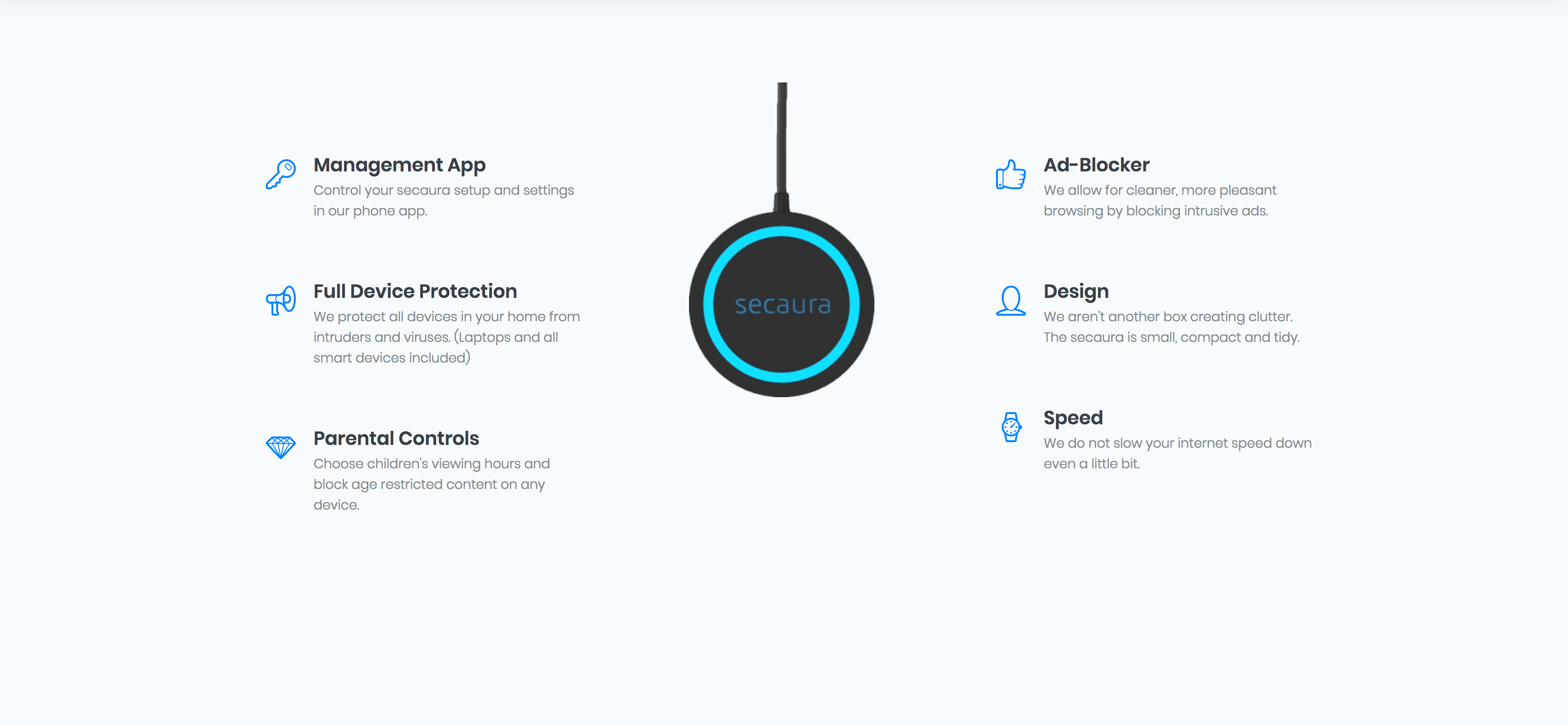
Even here we are talking about all the dangers, and the truth is that most people don’t respond to these triggers. What’s the lesson there? What do people respond to?
So our view is that you have to appeal to people’s sense of responsibility and their more evolved sensibilities: taking responsibility for your family, doing your basic duty as a parent or a homeowner.
You lock your doors and check for mold and termites in your home, so the same logic should apply when you’re securing your network as well. It just has to be part of the basic package of having a safe home. Like child-locks on your medicine cabinets, or having your chimney swept once in awhile. It should be that simple.
So, people make a lot of these basic decisions without thinking too much. Do I buy the regular power strip, or the one with a surge protector? Our responsibility, as a security company, should be to make that decision obvious, and then to follow up on that, and make it simple enough that people stick with it.
Why do you think design is so important for a security company?
We are selling peace of mind, and in order to do that, convenience and user experience is imperative. True peace of mind in our case means you never need to think about it again after installation. (If you don’t want to.)
There is an interesting balancing act in designing something that should be easy to use and to forget about, but is also mission critical for your safety. You have to kind of make it visible, but at the same time non-threatening and friendly. This is why our approach is to create a kind of friendly hockey-puck type device that just sort of sits there and says: “I’m here… everything is fine.”
It’s sort of like something between a smoke detector and an Apple TV. It isn’t daunting or flashy, it’s just there, it’s solid, reliable, always on; nothing to worry about. In some ways this is just applying the same approach to digital security as has existed in physical security design for a long time. Simple, subtle, but not a toy.
You were previously located in Virginia, outside Washington DC, which is a natural hot-spot for digital security products. Why choose Prague and StartupYard as your next home?
We moved back to Europe because we saw an opportunity in the market. Europeans, generally speaking, are more privacy aware. That has been shown very much in the way regulations have evolved in Europe, now including the GDPR privacy regulations. People value privacy, and see it much more as a basic necessity than in other places.
Right now in the US, you have companies like Amazon convincing their customers to put cameras in their homes, so the company can literally watch their homes and their delivery people can enter people’s homes while they’re gone.
That is pretty surprising to many Europeans (and many Americans too). Maybe I’m crazy, but I don’t think Europeans will widely accept that kind of sacrifice of privacy in their homes for more convenience. I hope that they won’t, because it sets a scary precedent for the risks we’re willing to take with our personal security.
But also, Europeans understand that big companies are going to try to compromise our privacy even without us realizing it. These companies would like to listen to everything we say and watch everything we do, because there is money in that. But European culture more or less believes that the welfare of society is more important than the business benefit of intrusive tech.
That is why companies like Facebook and Google have so many more challenges in Europe with regulations and oversight, because they take that kind of thing much more seriously.
The reason we chose StartupYard is because they have a very relevant network which we are currently leveraging. We couldn’t be happier here.
As I don’t have to tell the Czech people reading this, Prague has a long history of security engineering and cyber-security businesses like Avast, AVG, Cognitive Security, etc. Czech businesspeople understand security and take it seriously, which makes our lives easier, and provides more opportunities.
Plus, Czechia has a global reputation for security knowledge and prowess. We have definitely seen that this is based in fact.
What would you say is the most important thing you’ve learned in your time at StartupYard? What was your hardest lesson? Have you grown as a company and as founders because of that experience?
This is my first company. Obviously, you have ideas about how easy it is to make deals, and negotiate with people based on your common interests. When you really believe in your ideas, it feels like you can convince anyone you’re right.
One thing I’ve really appreciated in the process of mentorship at StartupYard, and then talking with corporations and partners about future plans, is that corporations are not one entity at all. They are a collection of different power centers and objectives, mixed with a lot of personal and political motivations as well.
When you start meeting with these companies, you realize that you have a lot of work to do to show many different people that it is in their interest to help you. Having people sponsoring you in a corporation is great, but it only takes one person in a position to block you, and you’re stuck.
As a startup, you move fast every day, and you don’t ask for permission. That’s how you build something new and different, but at the end of the day, people from the older world of business have to buy into what you’re doing. You have to respect the fact that these people have been in the market much longer than you, and they know a lot of things about it that you don’t.
I hope, and I think, that we have become more humble in that regard.
What can we expect from Steel Mountain in the near term? When will people be able to buy your products and use them in their homes?
Steel Mountain will be making it’s flagship product, Secaura, available for pre-ordering from March 2018. Subscribe to our website and we will keep you updated.
We have many details to take care of between now and March, and we are tackling the complex process of manufacturing and distributing the hardware, as well as maintaining the security service that comes with it.
Our aim is to be a part of people’s homes for the foreseeable future, so it’s critical that we build everything now on a solid foundation. Security and privacy is very dependent on trust, so we are building partnerships with trusted companies that have a good track record of delivering on their promises.

